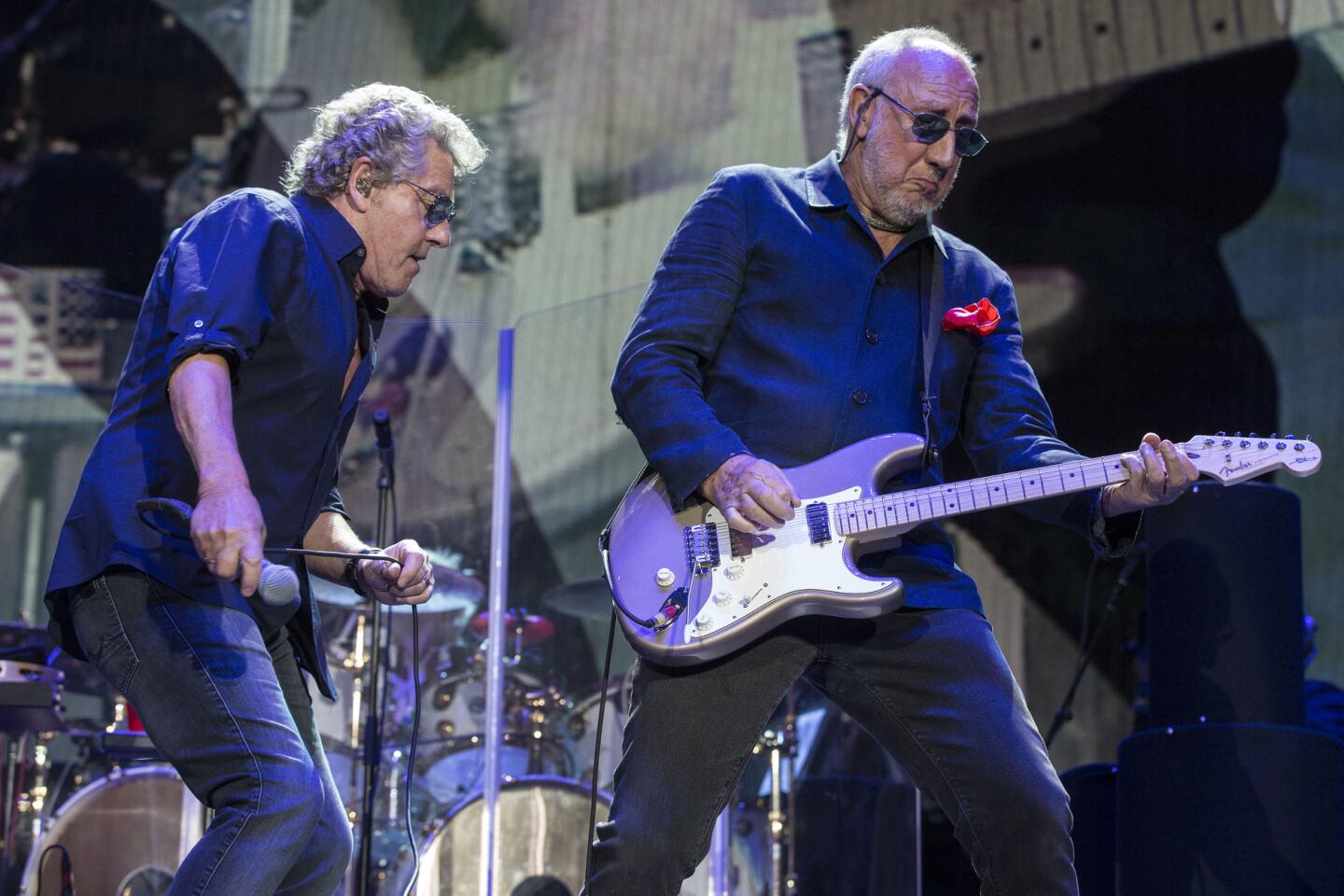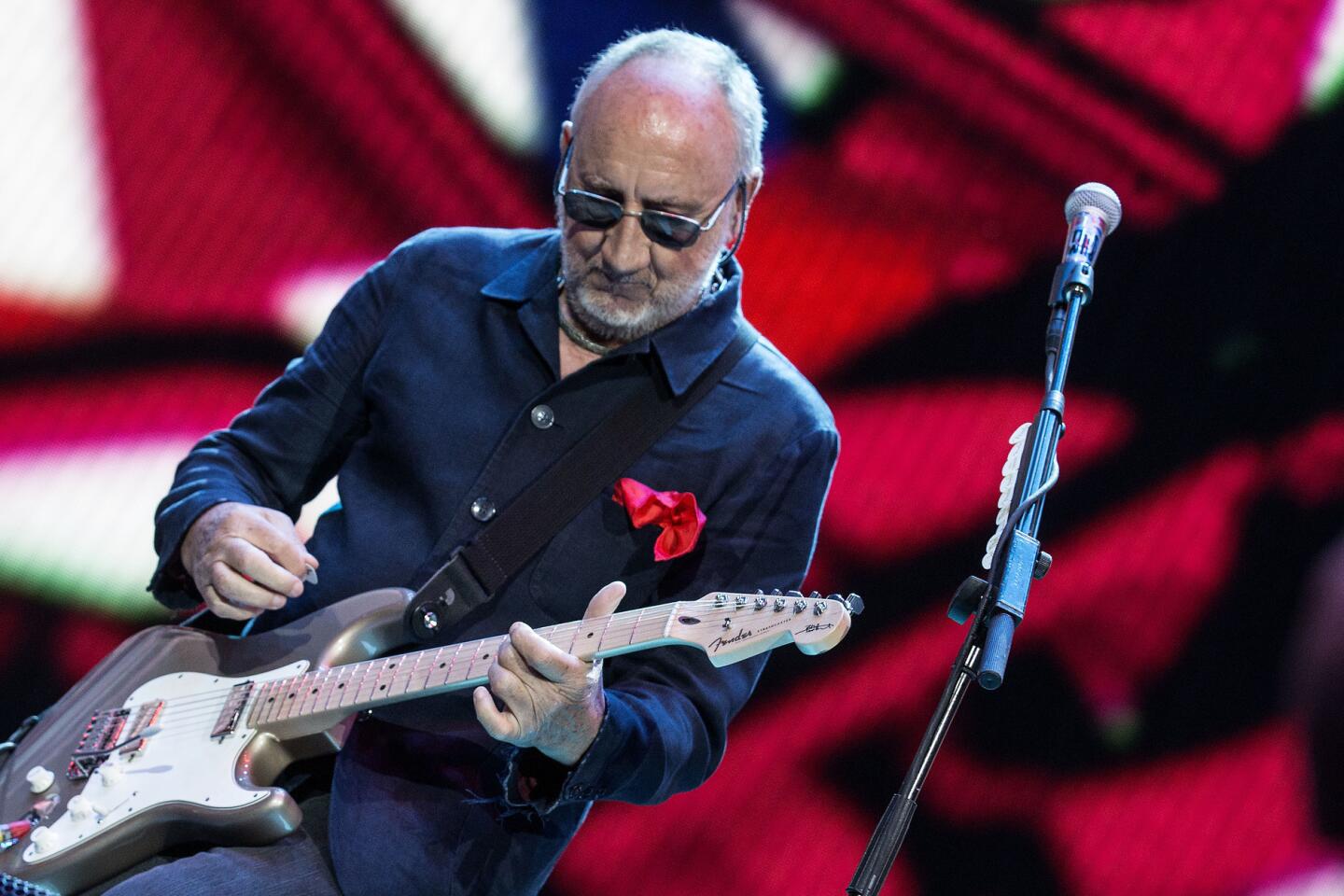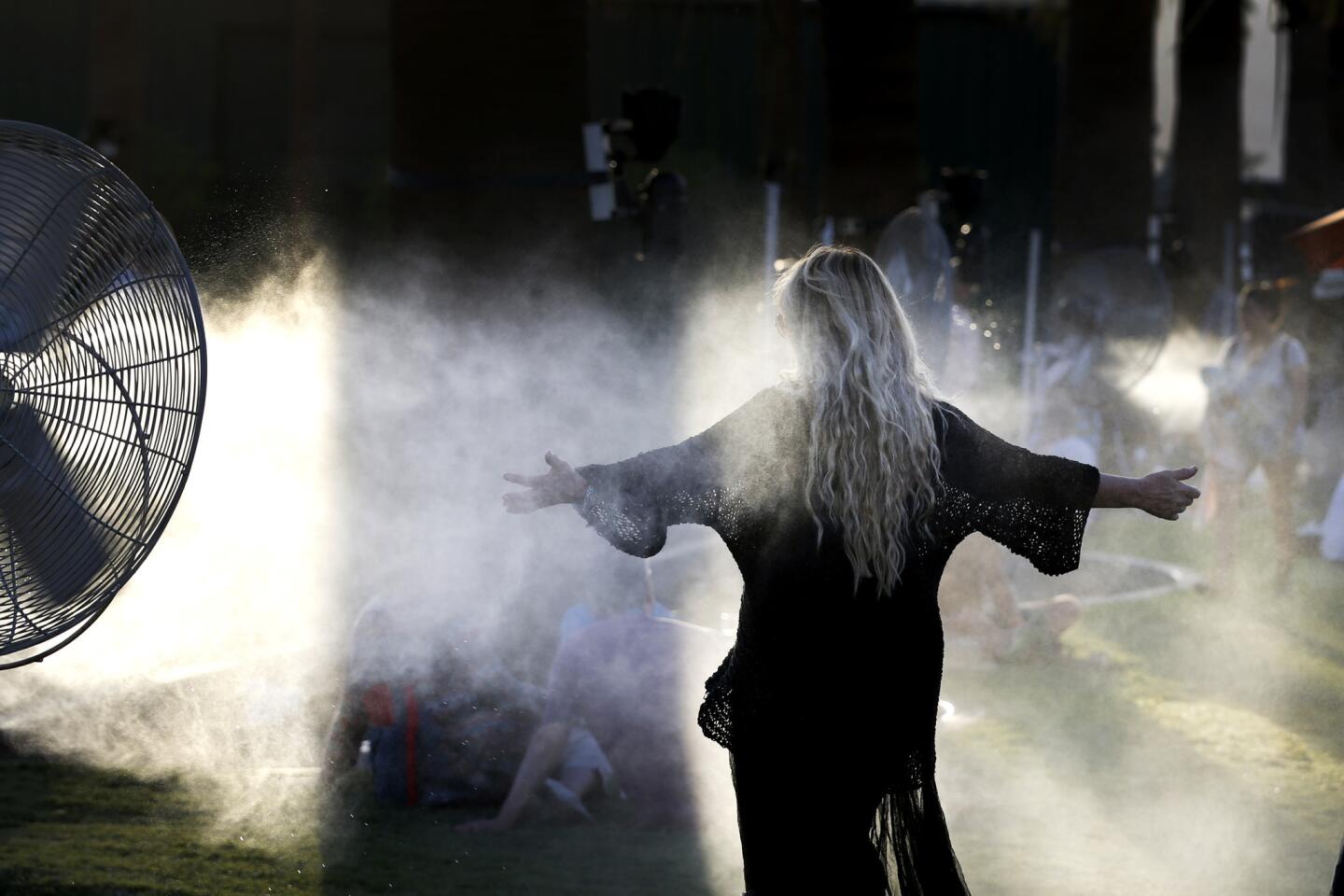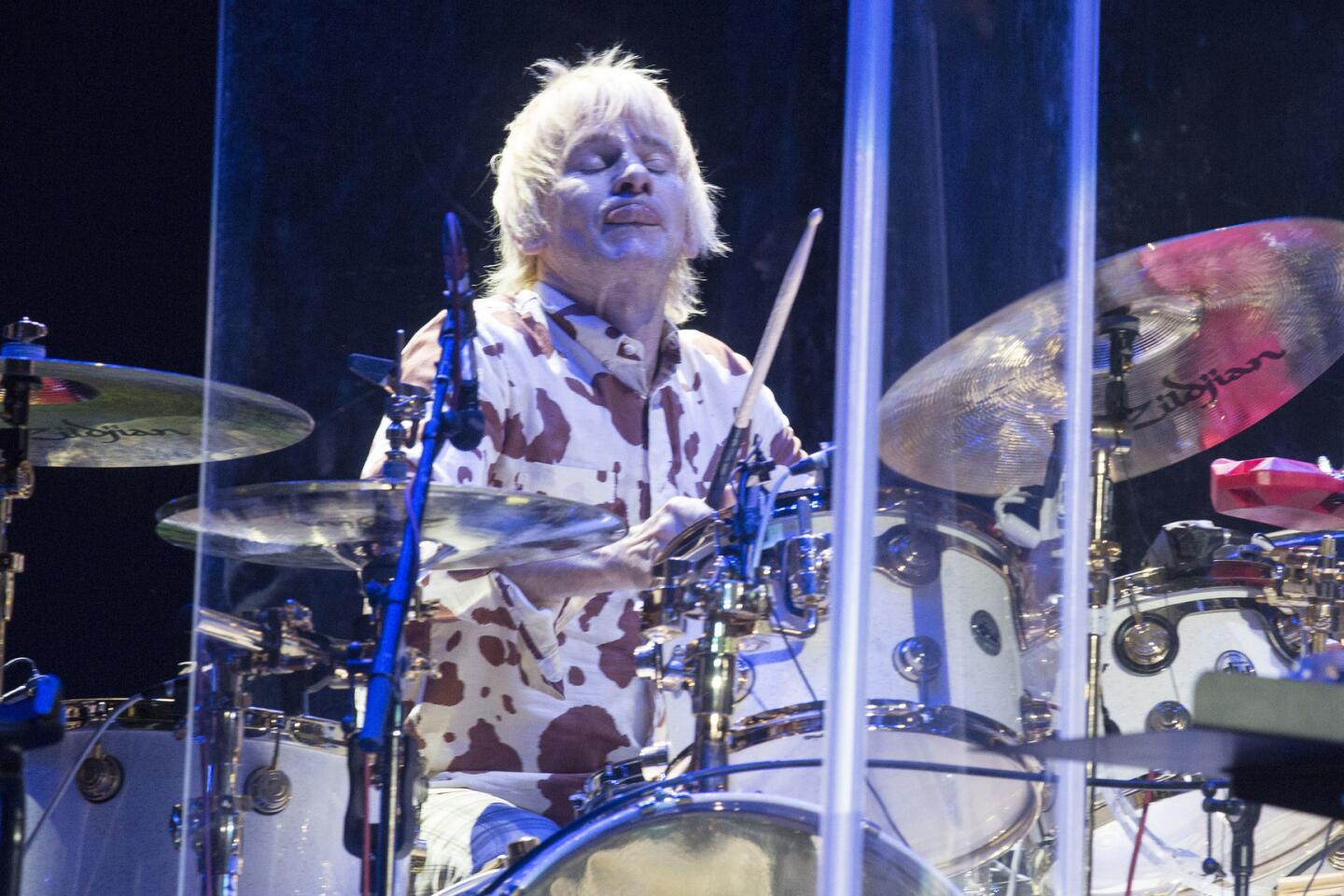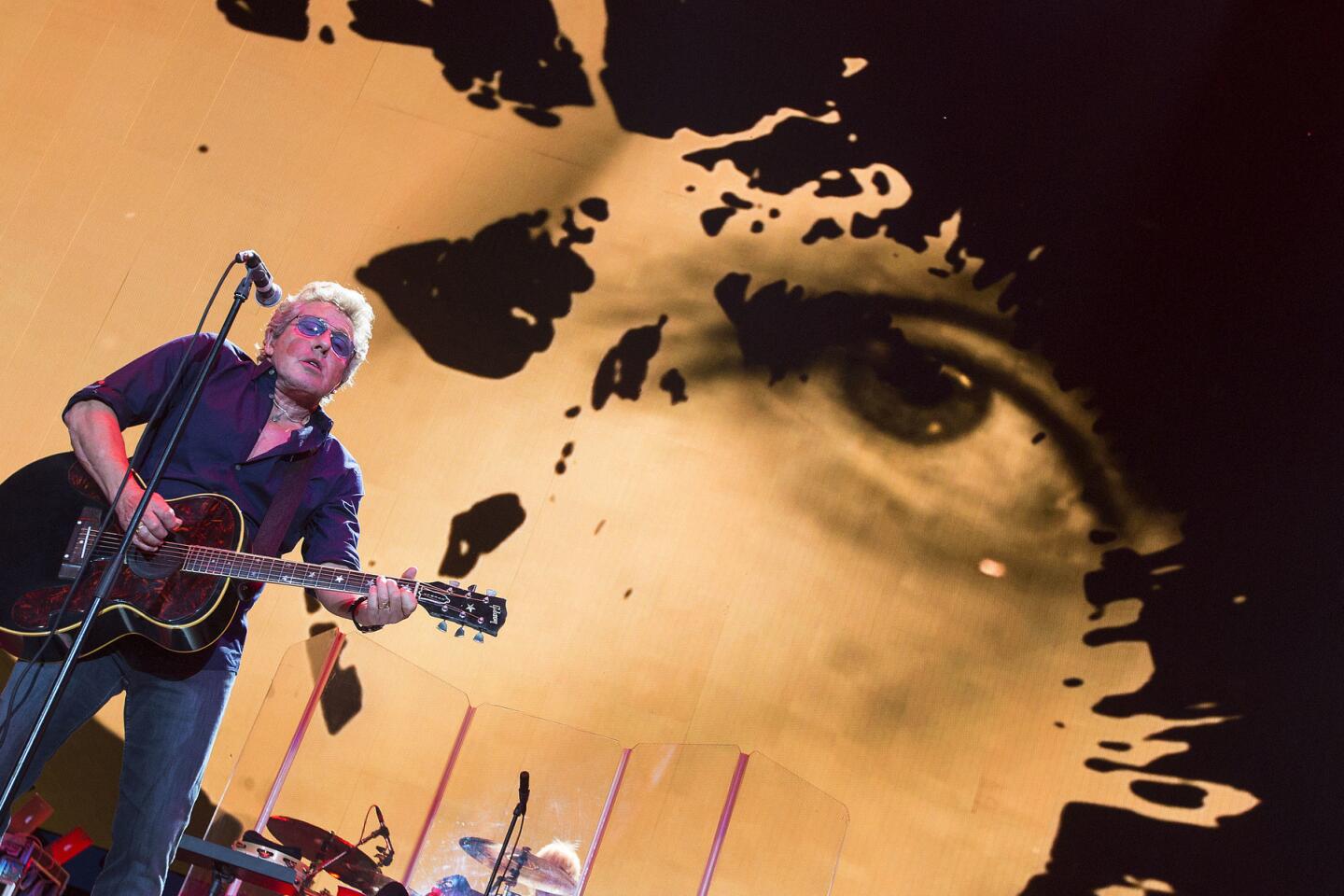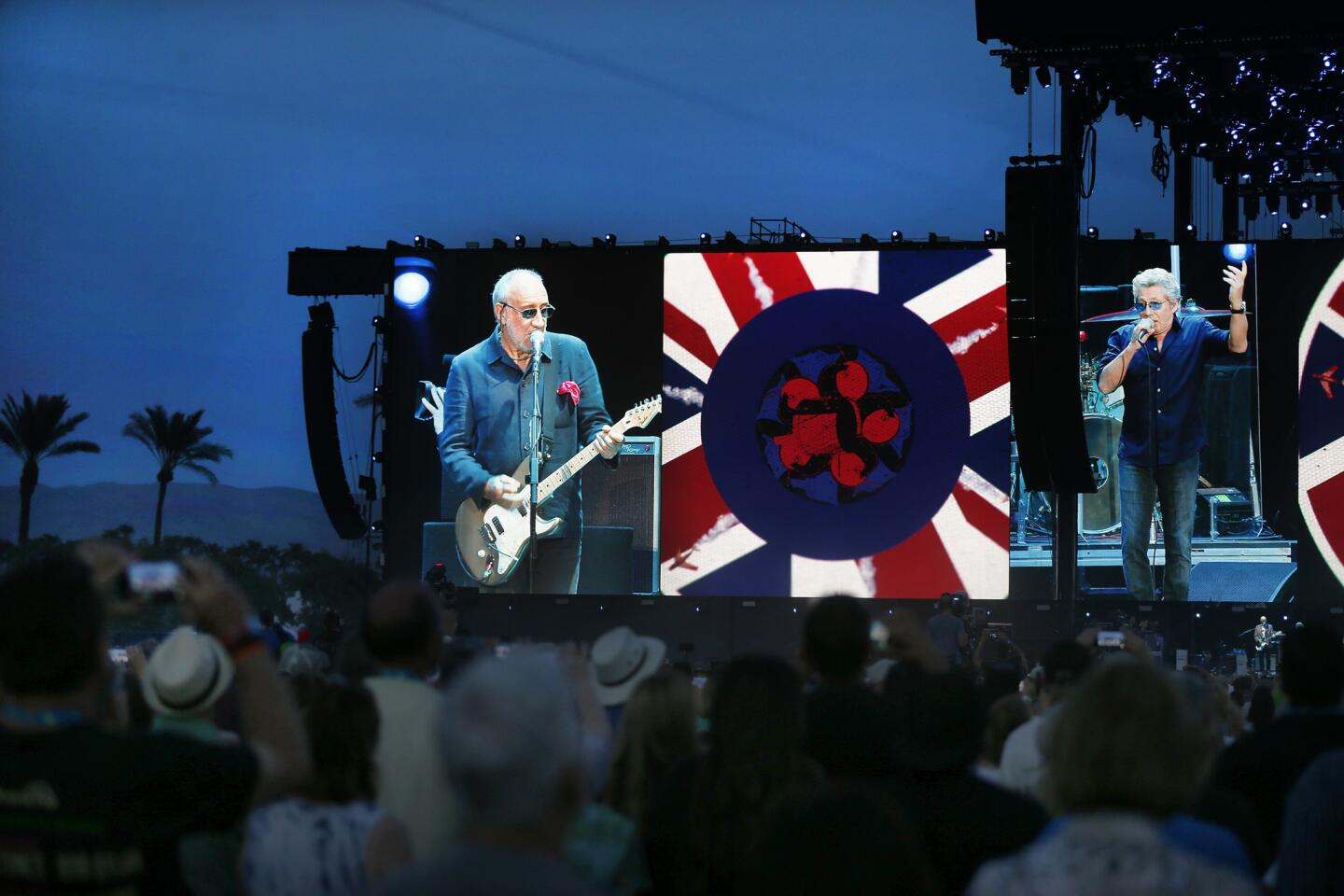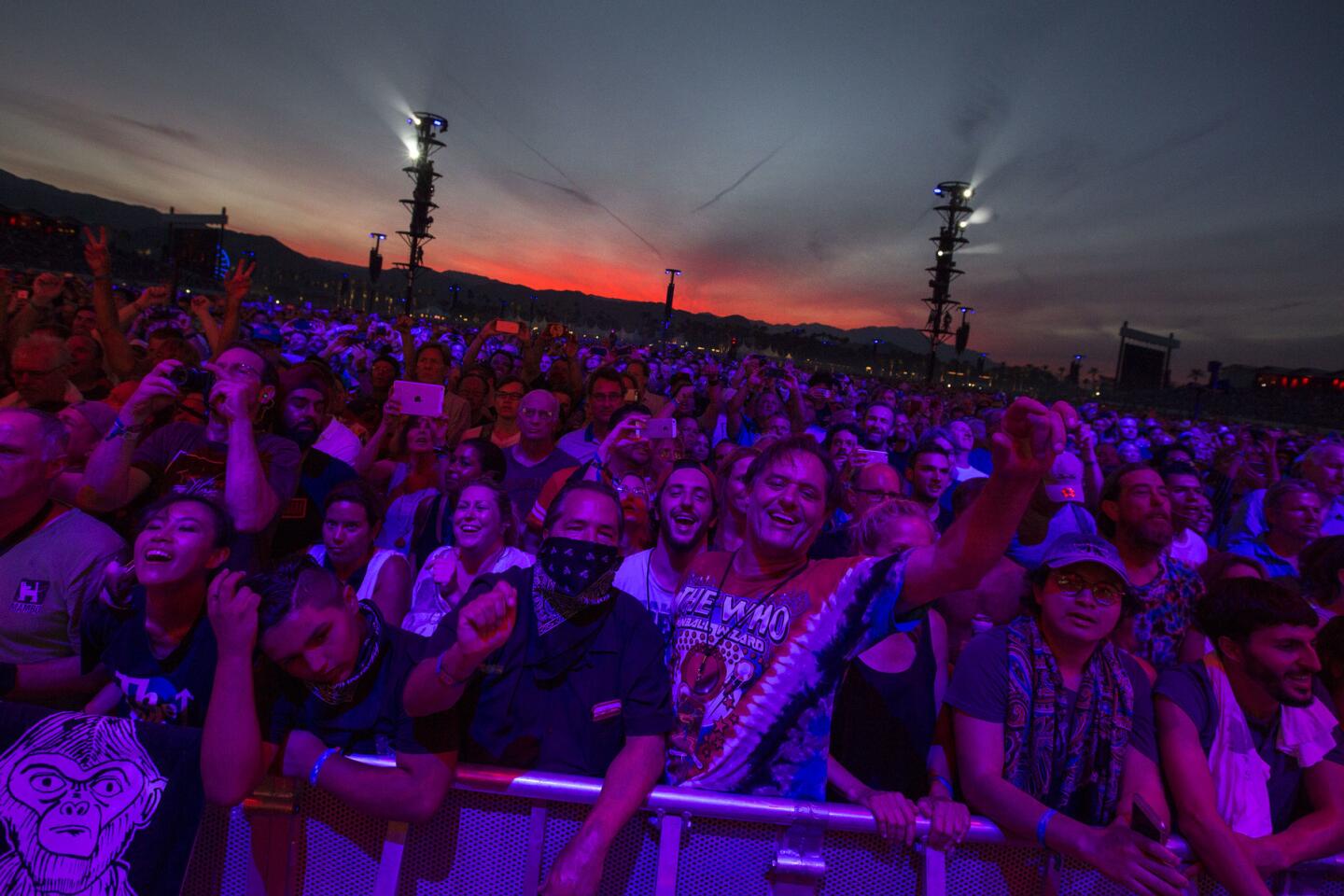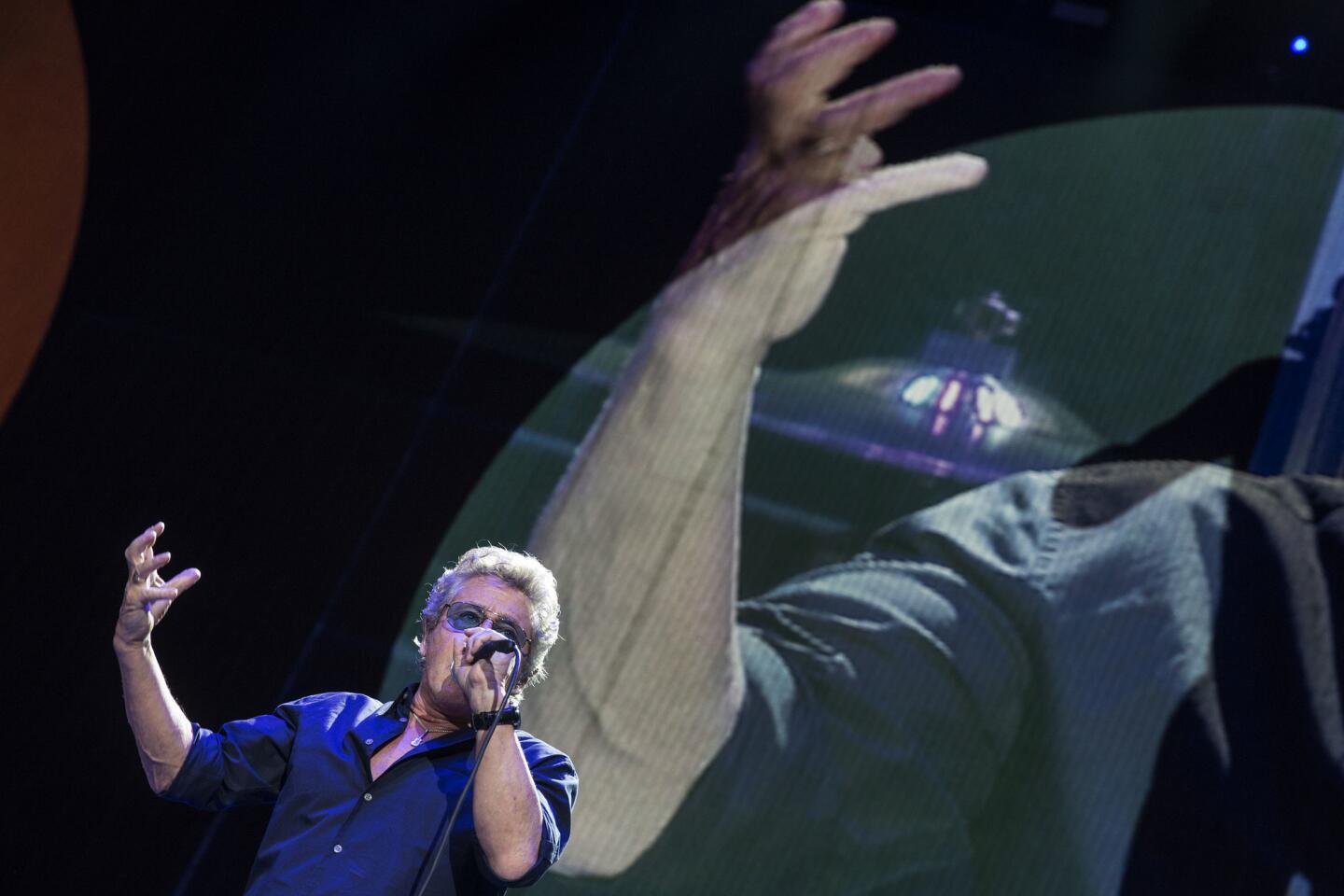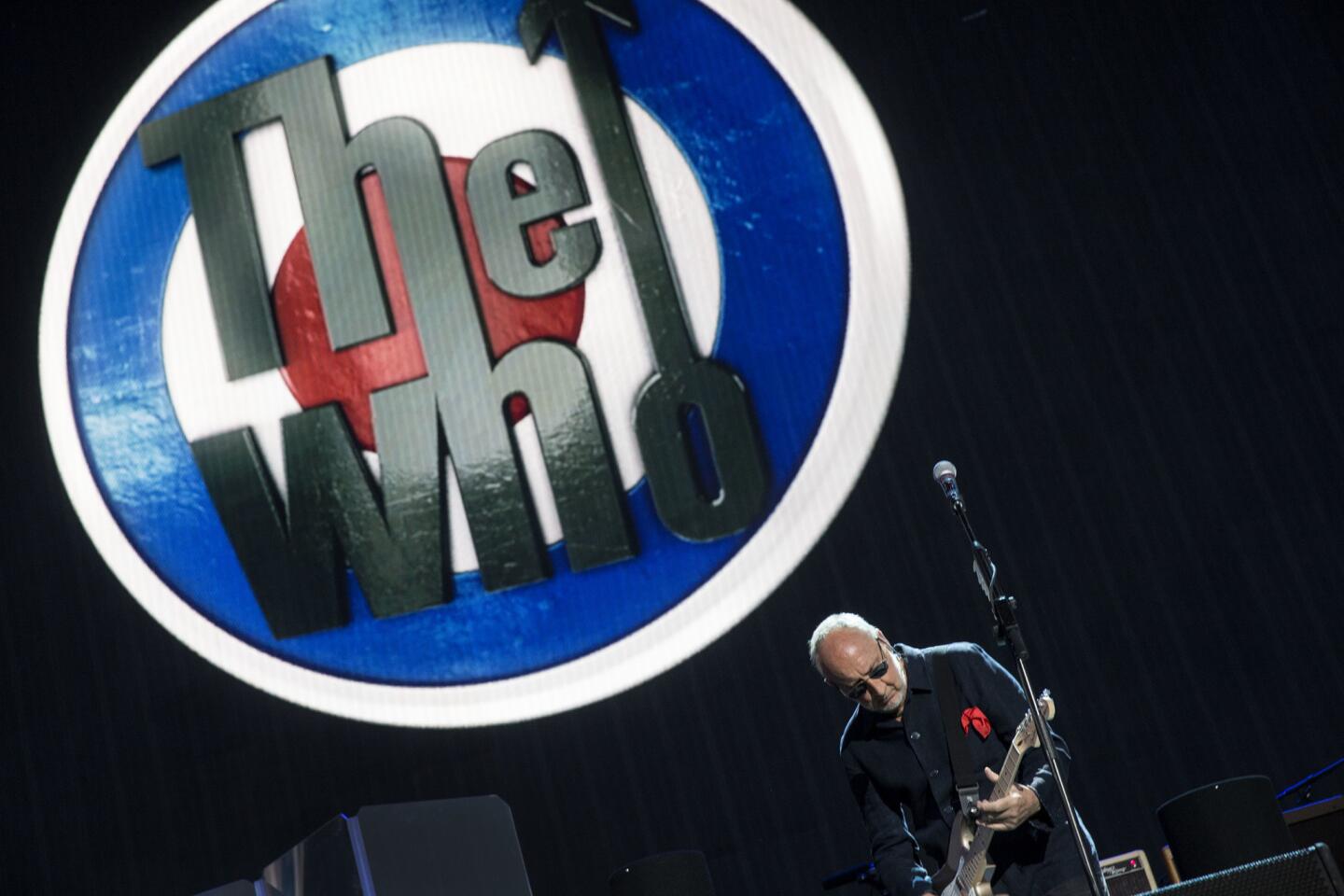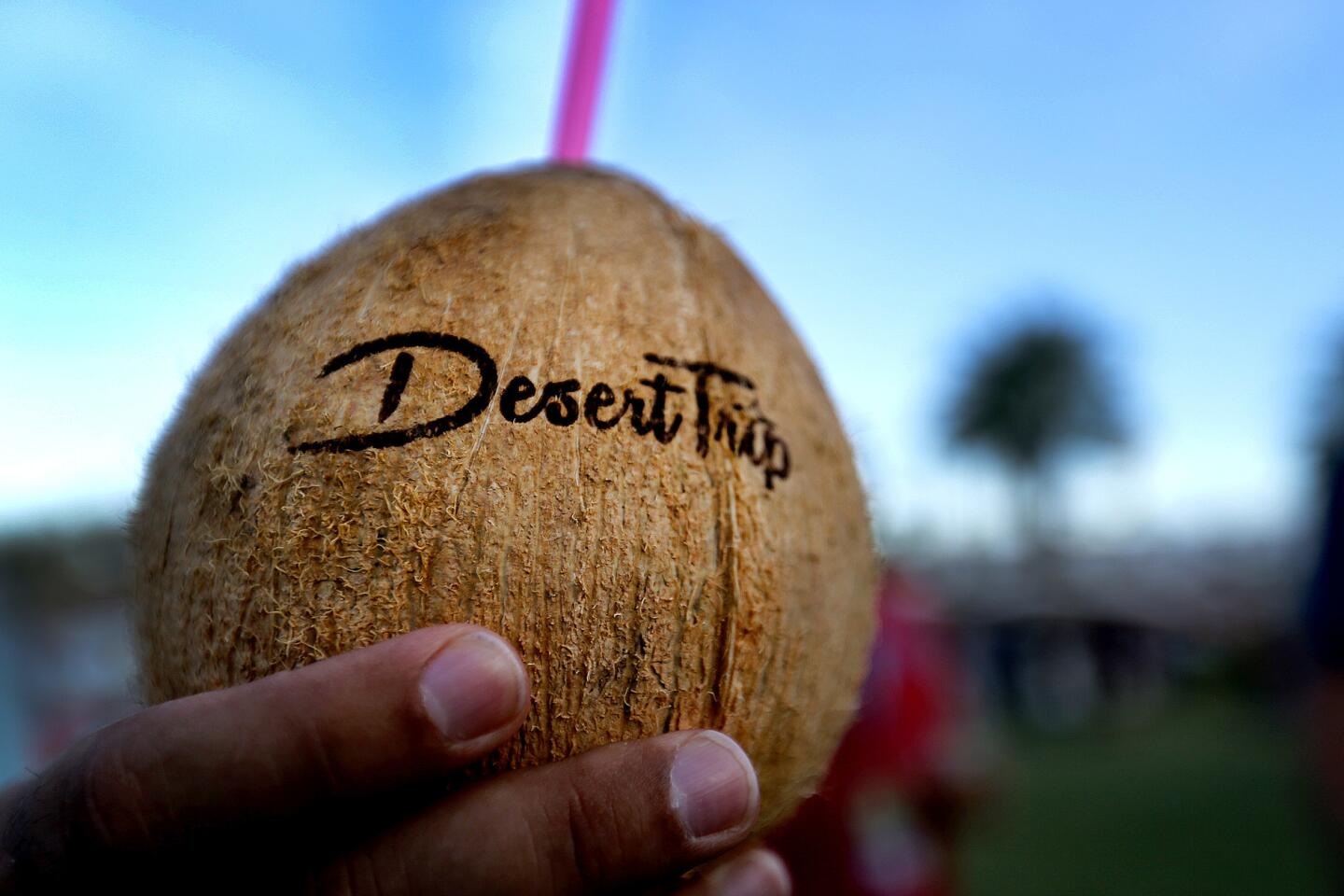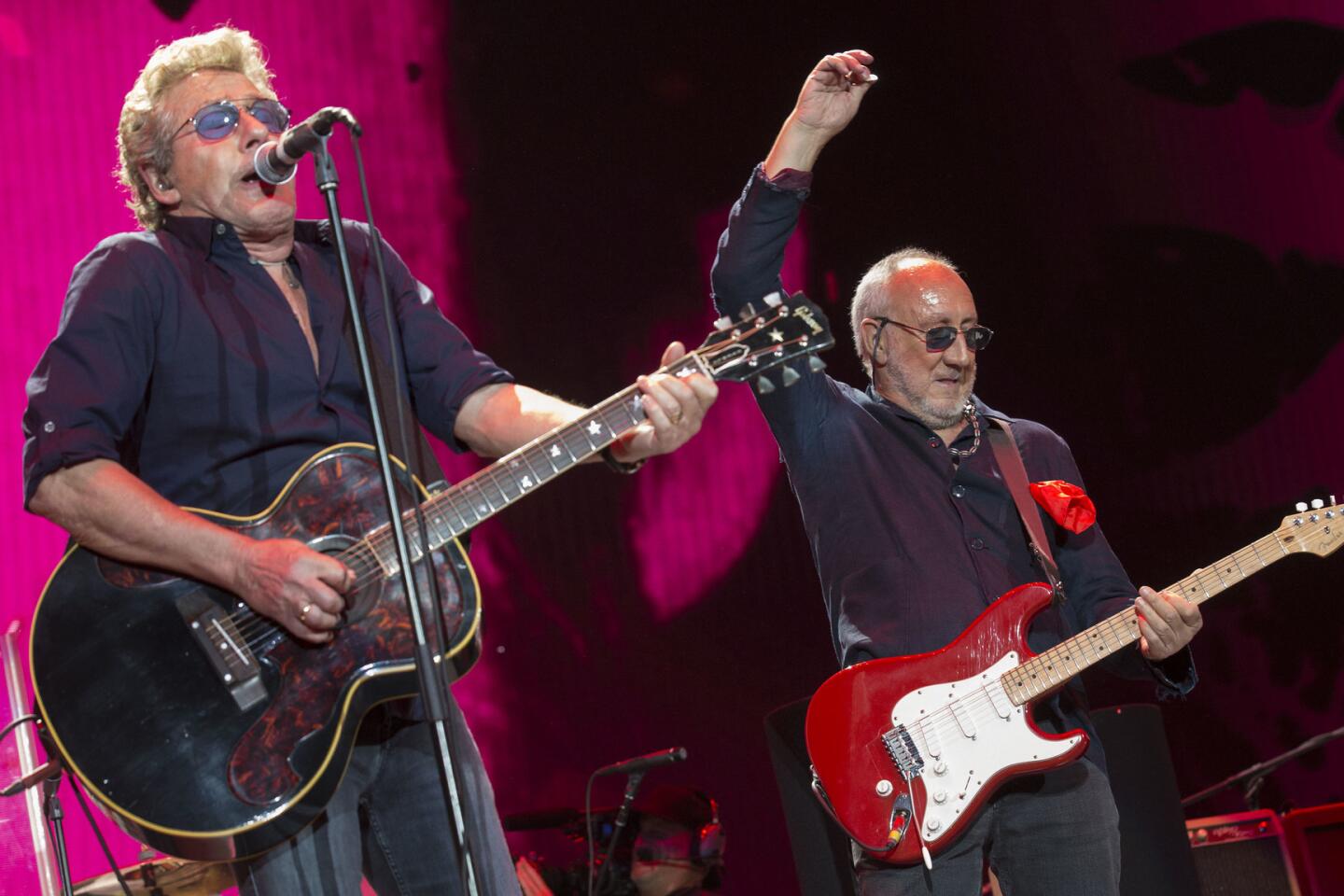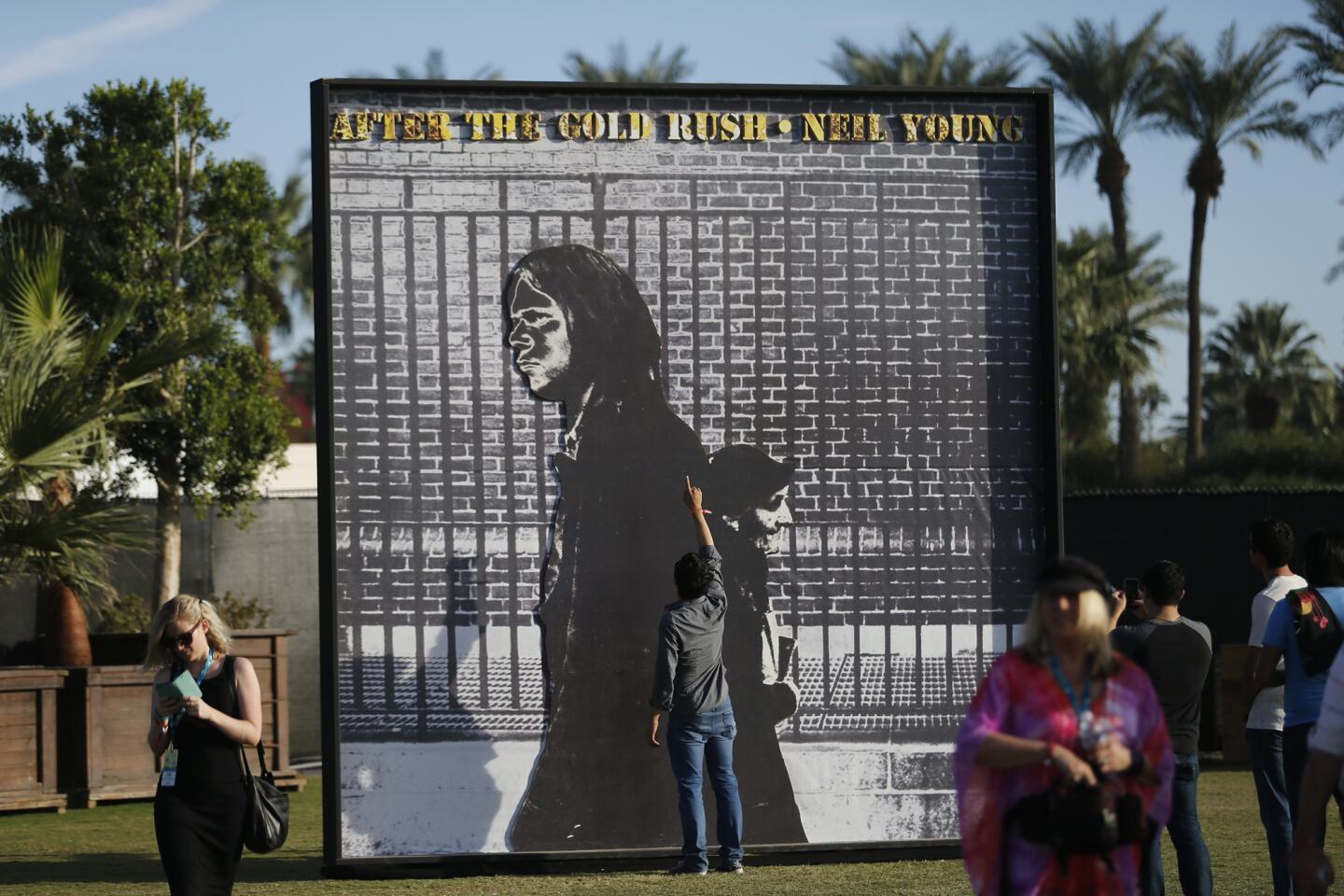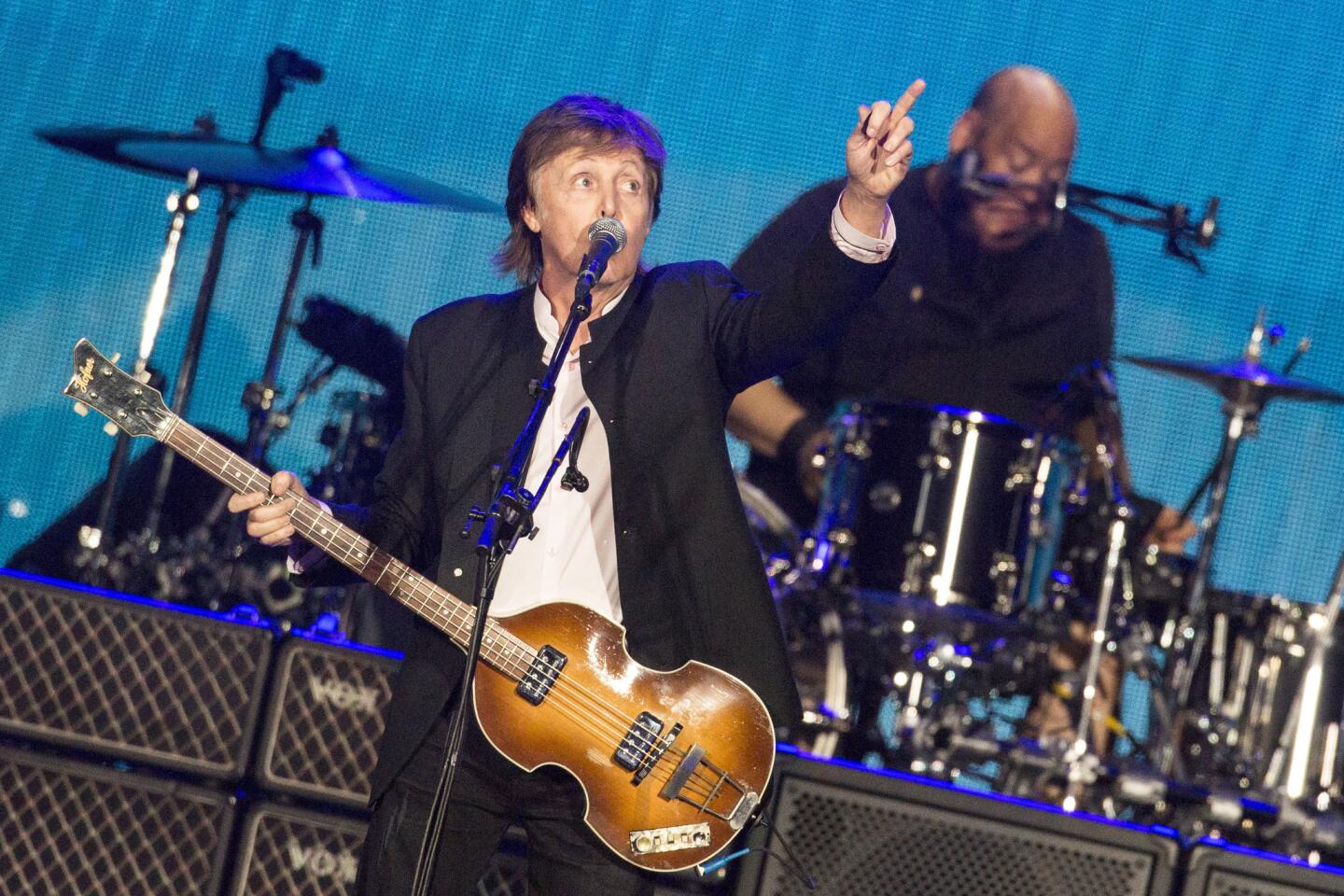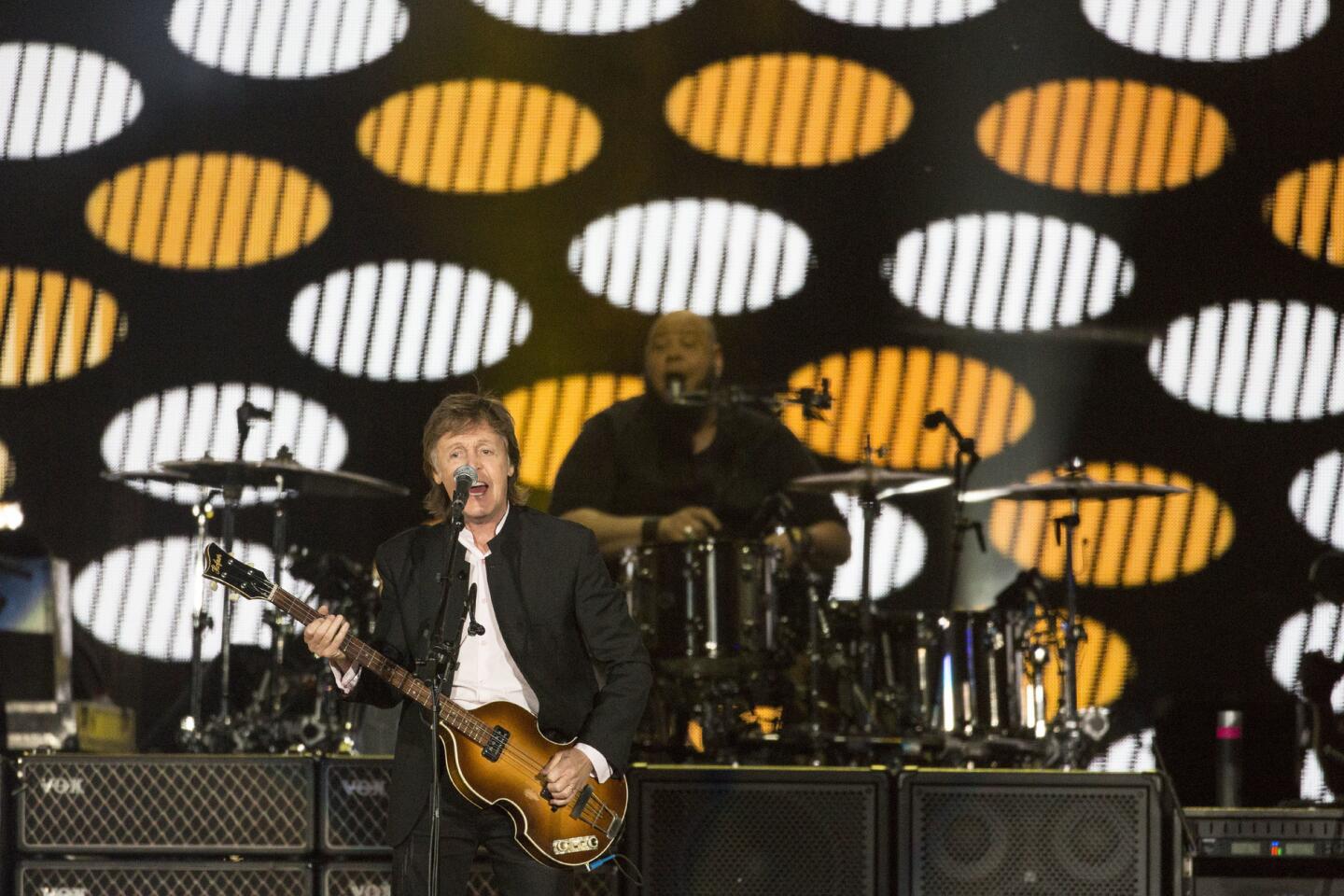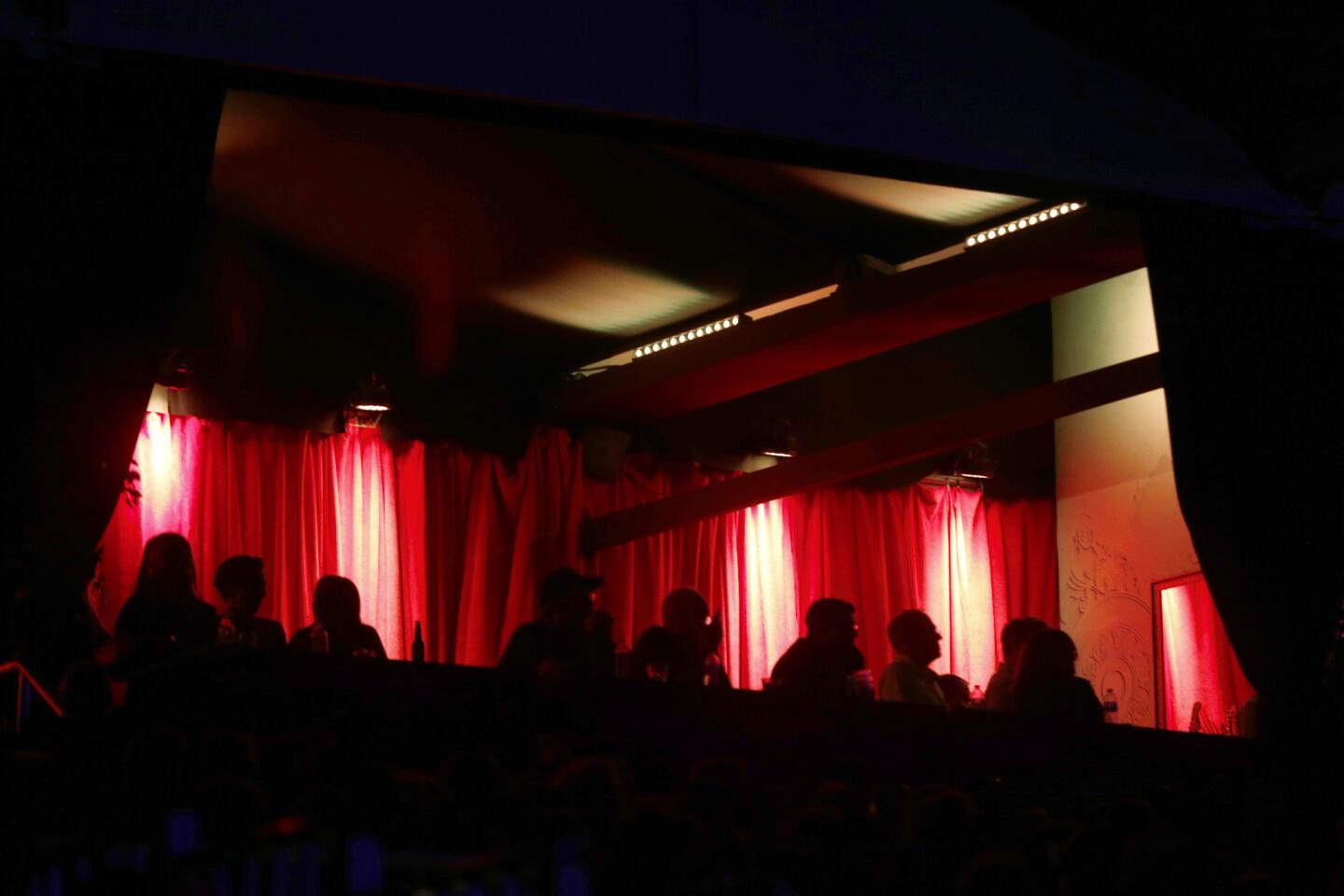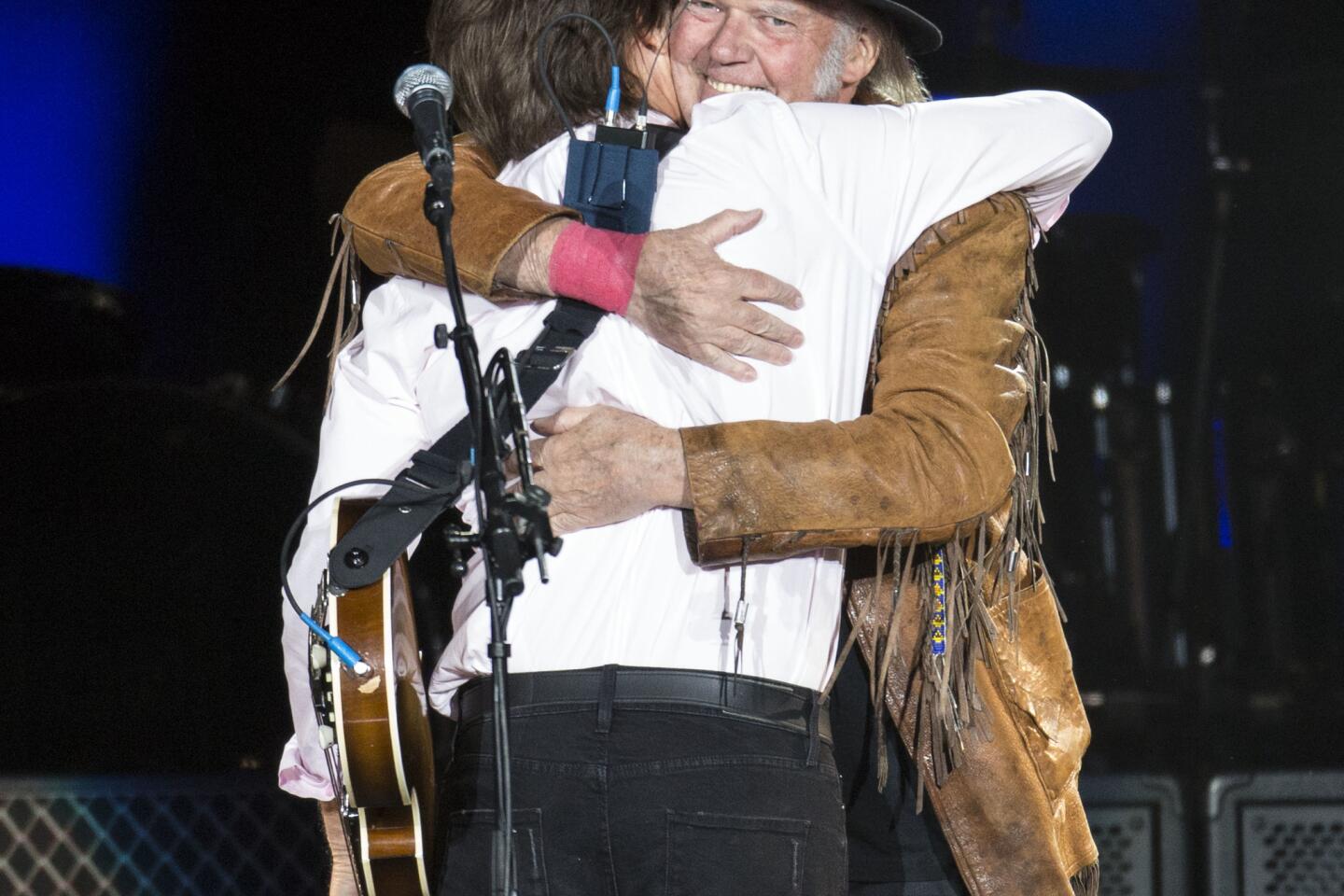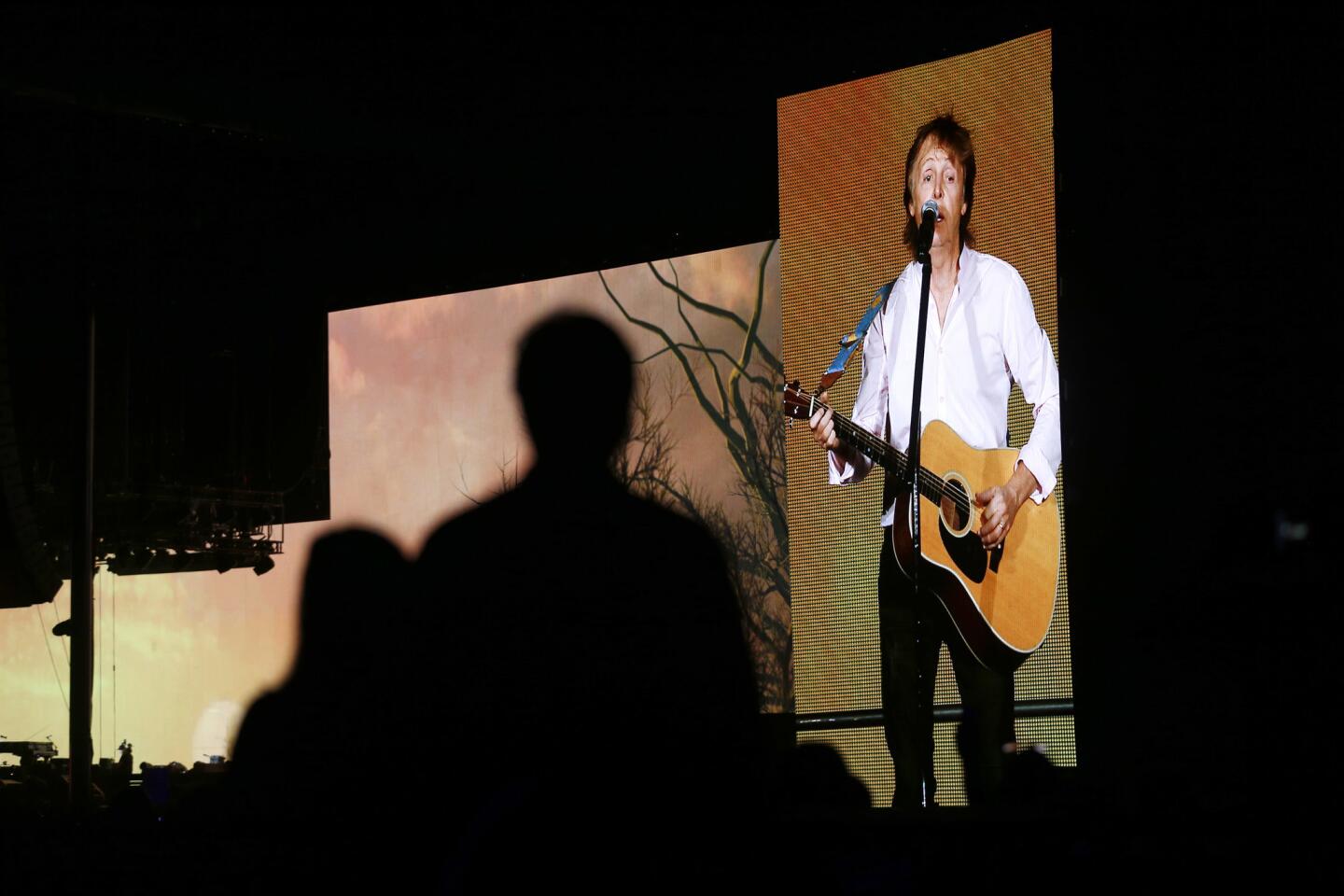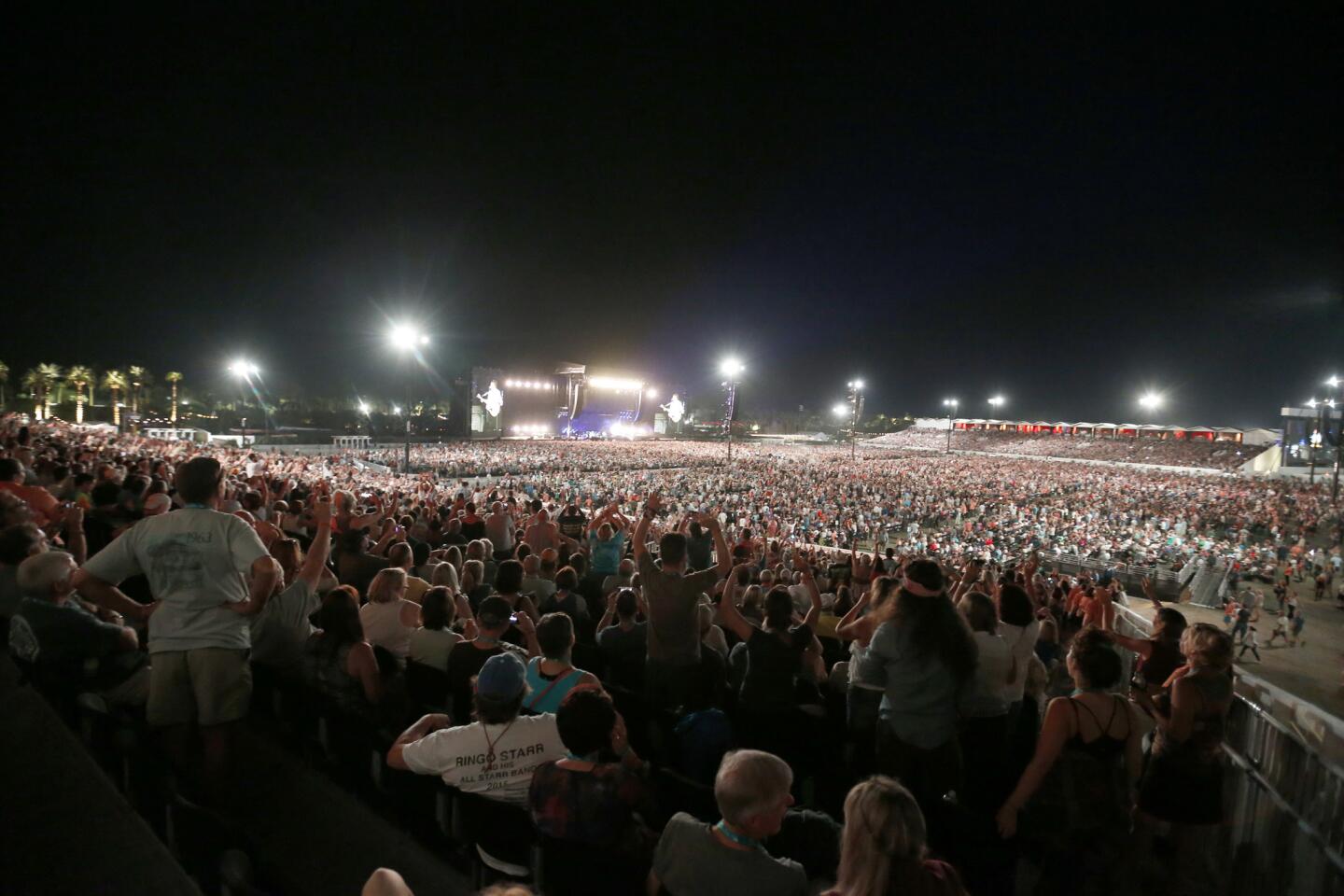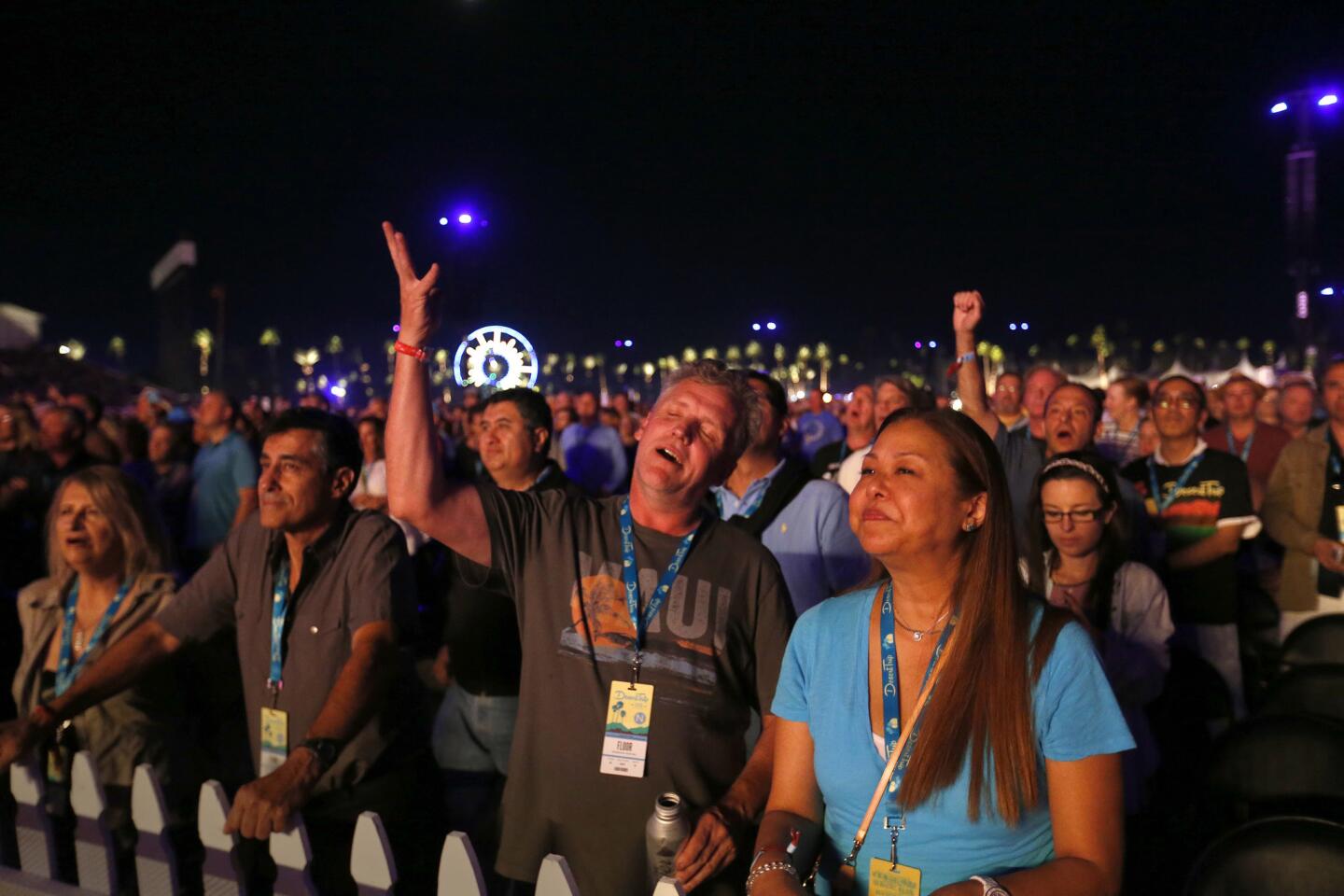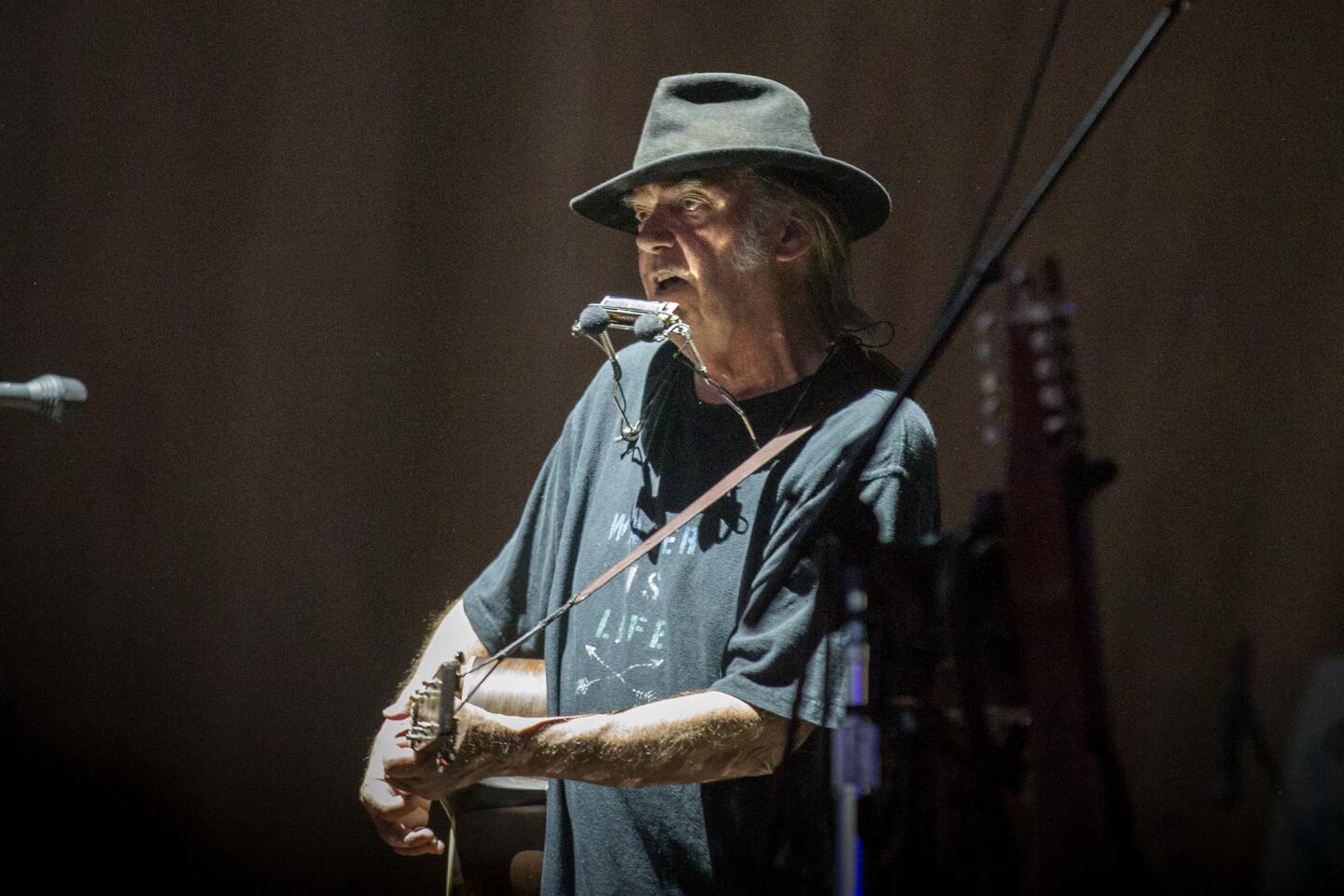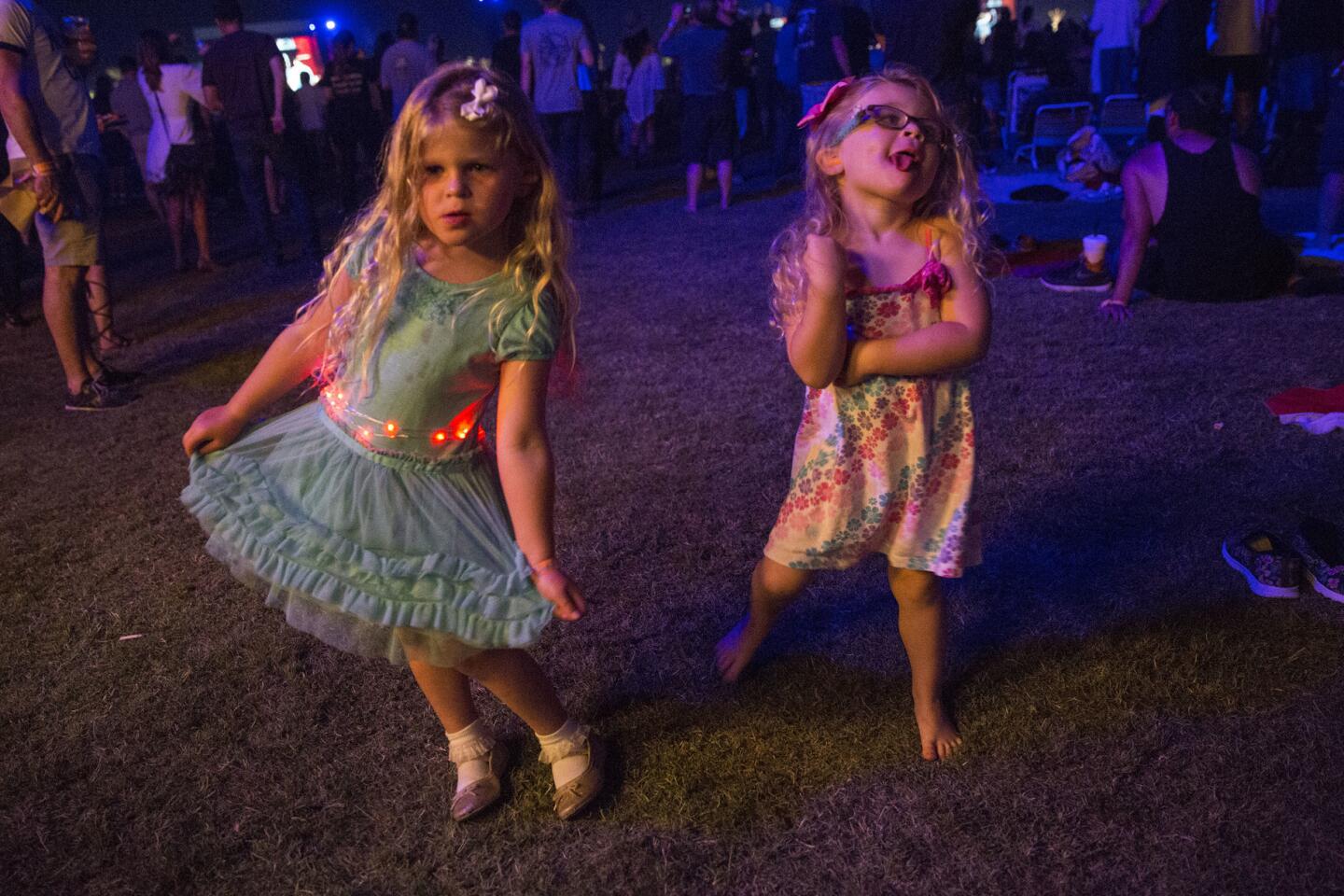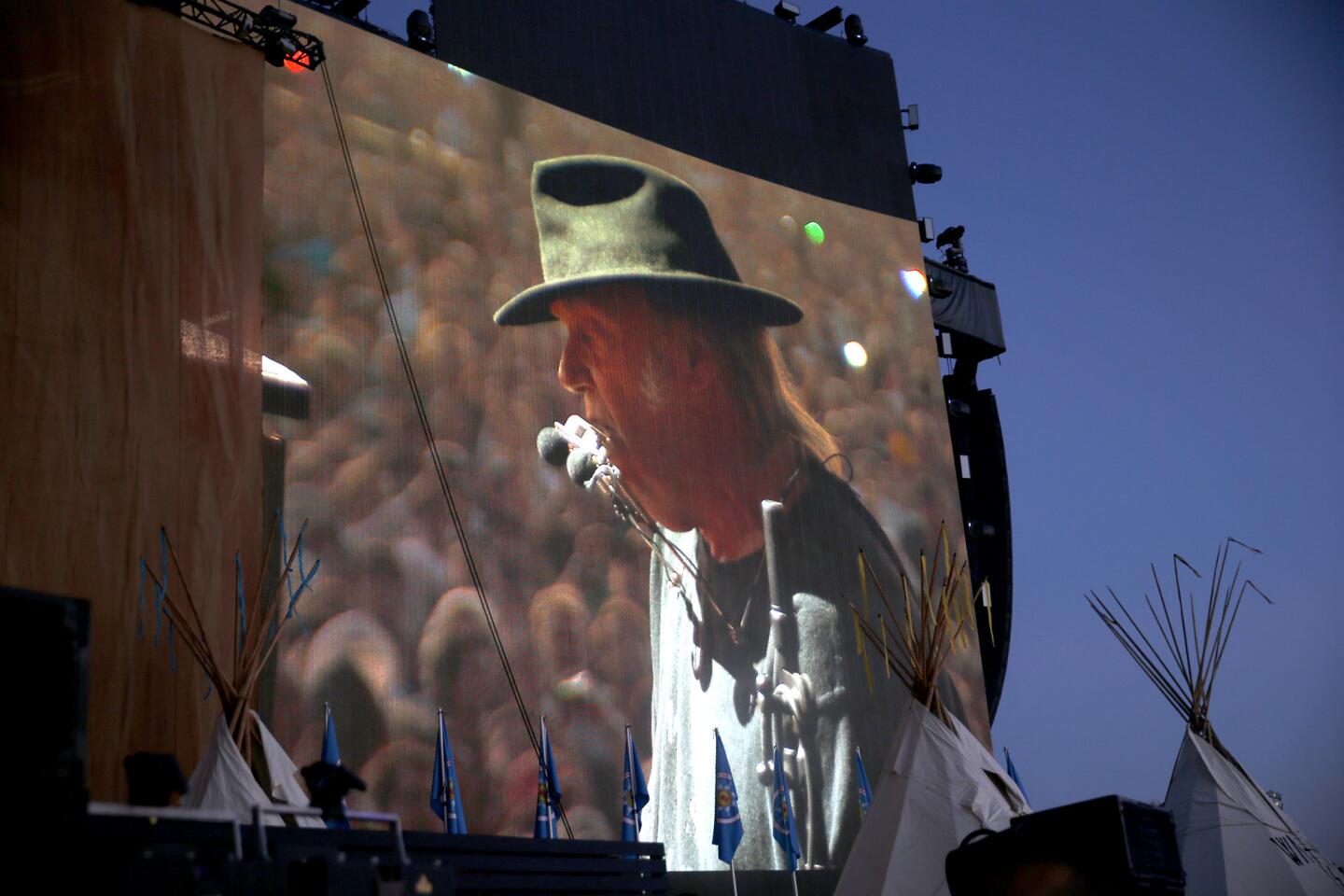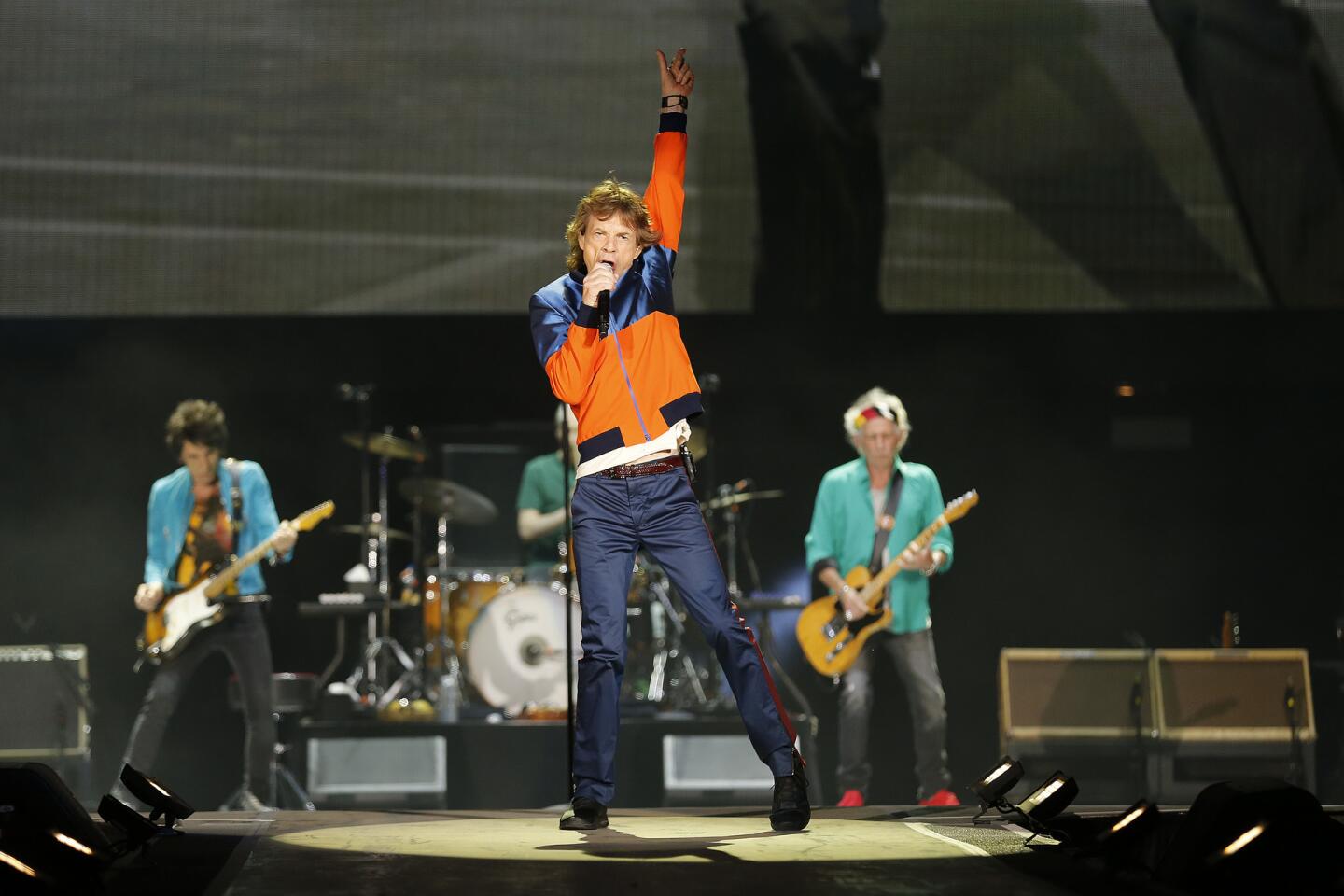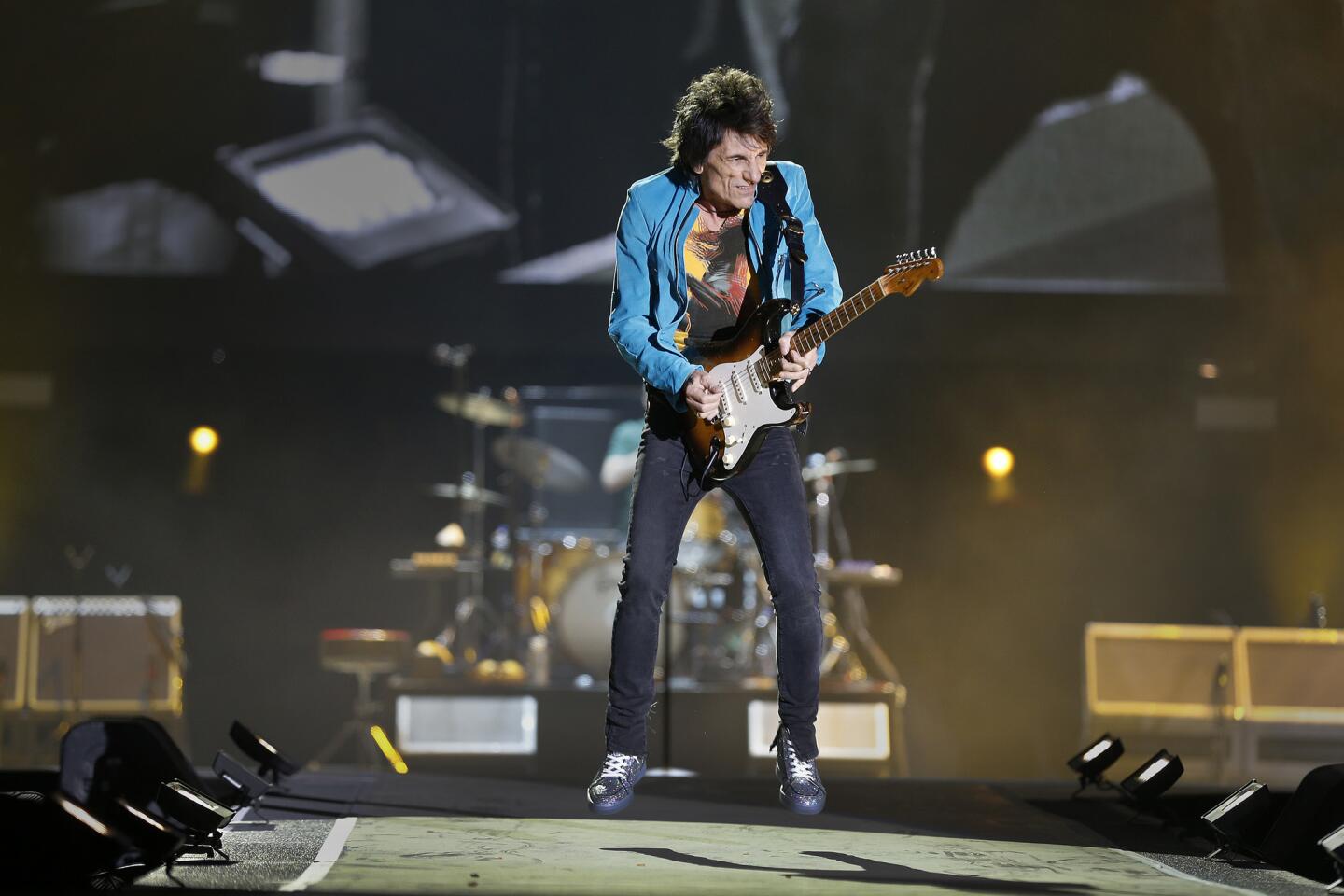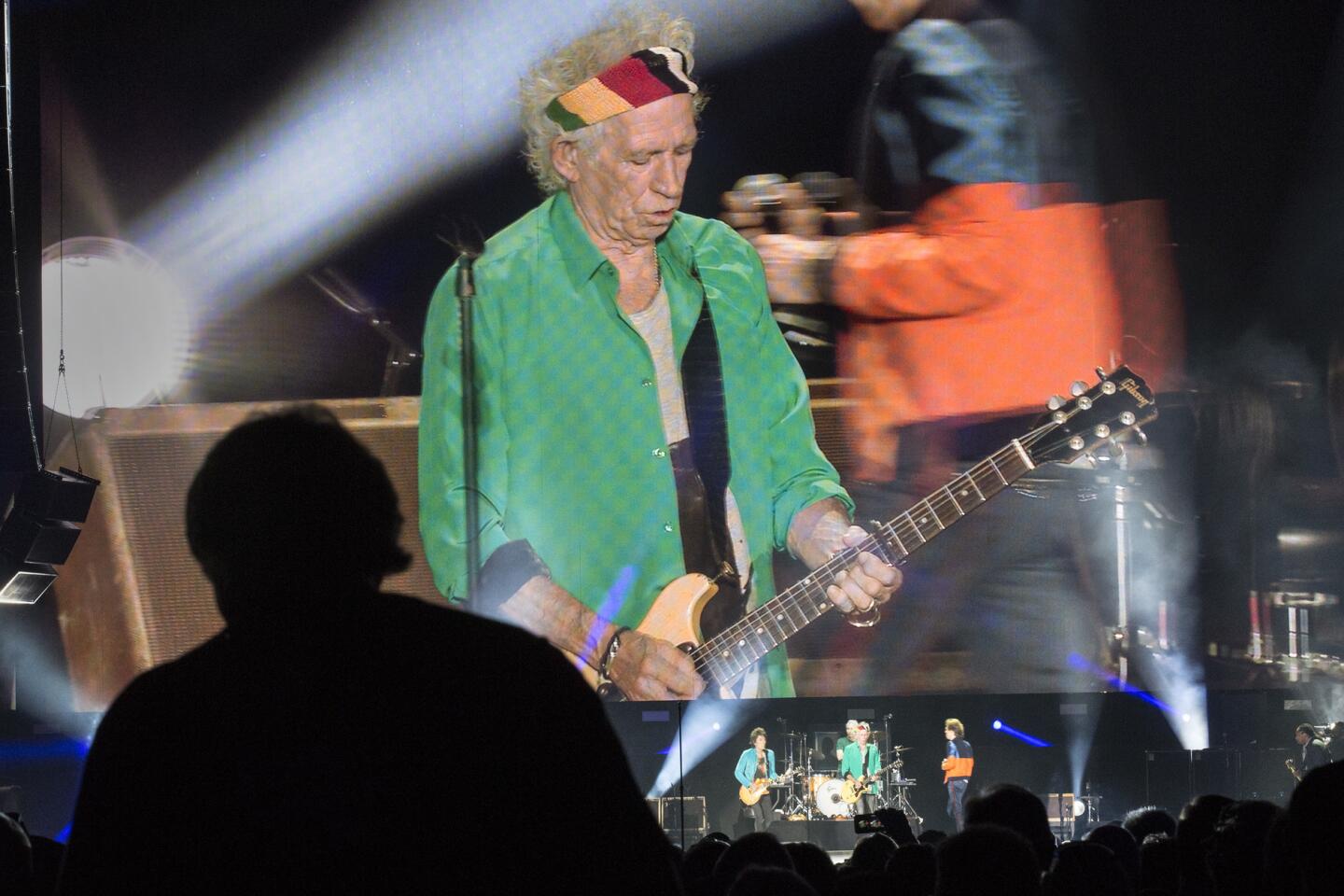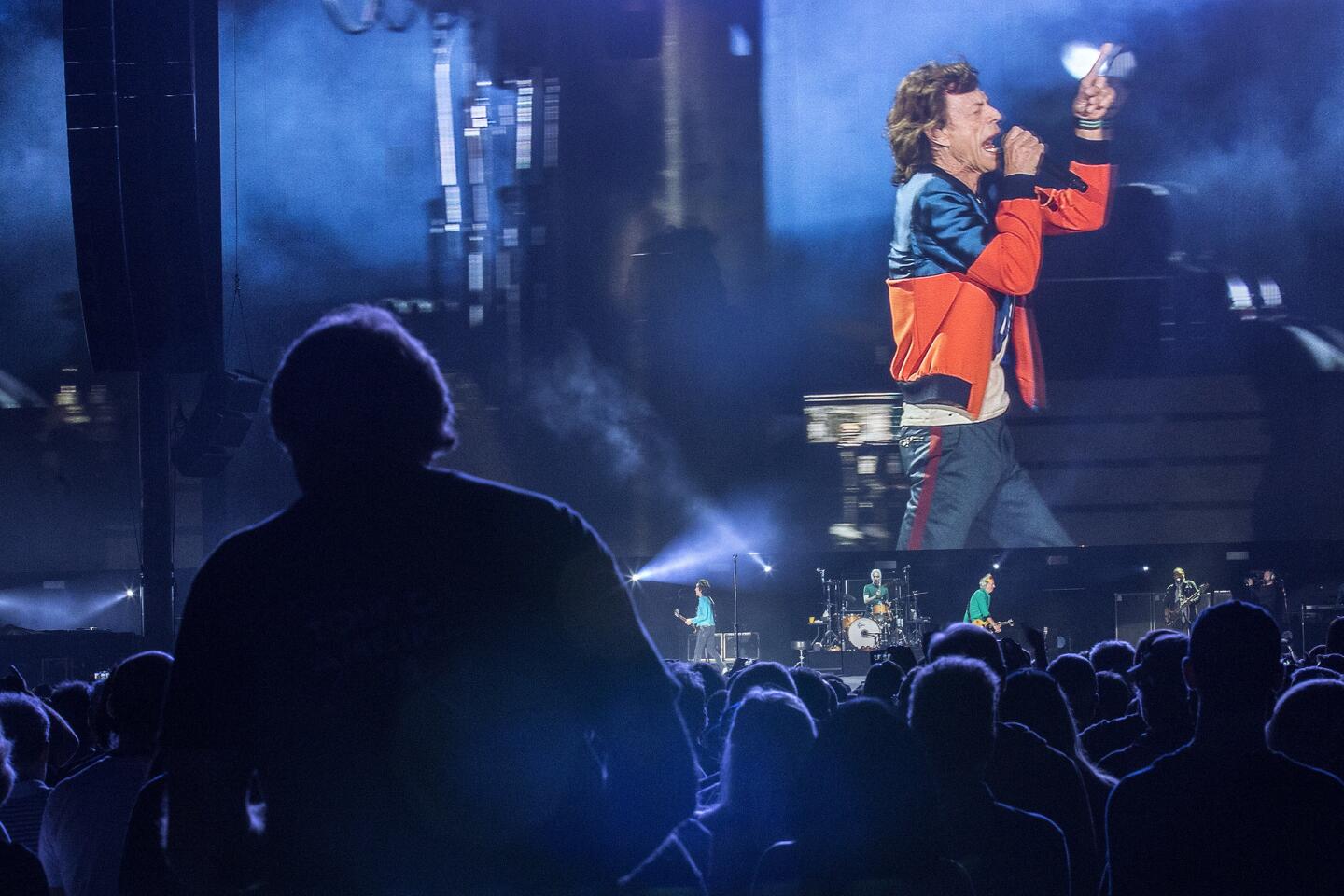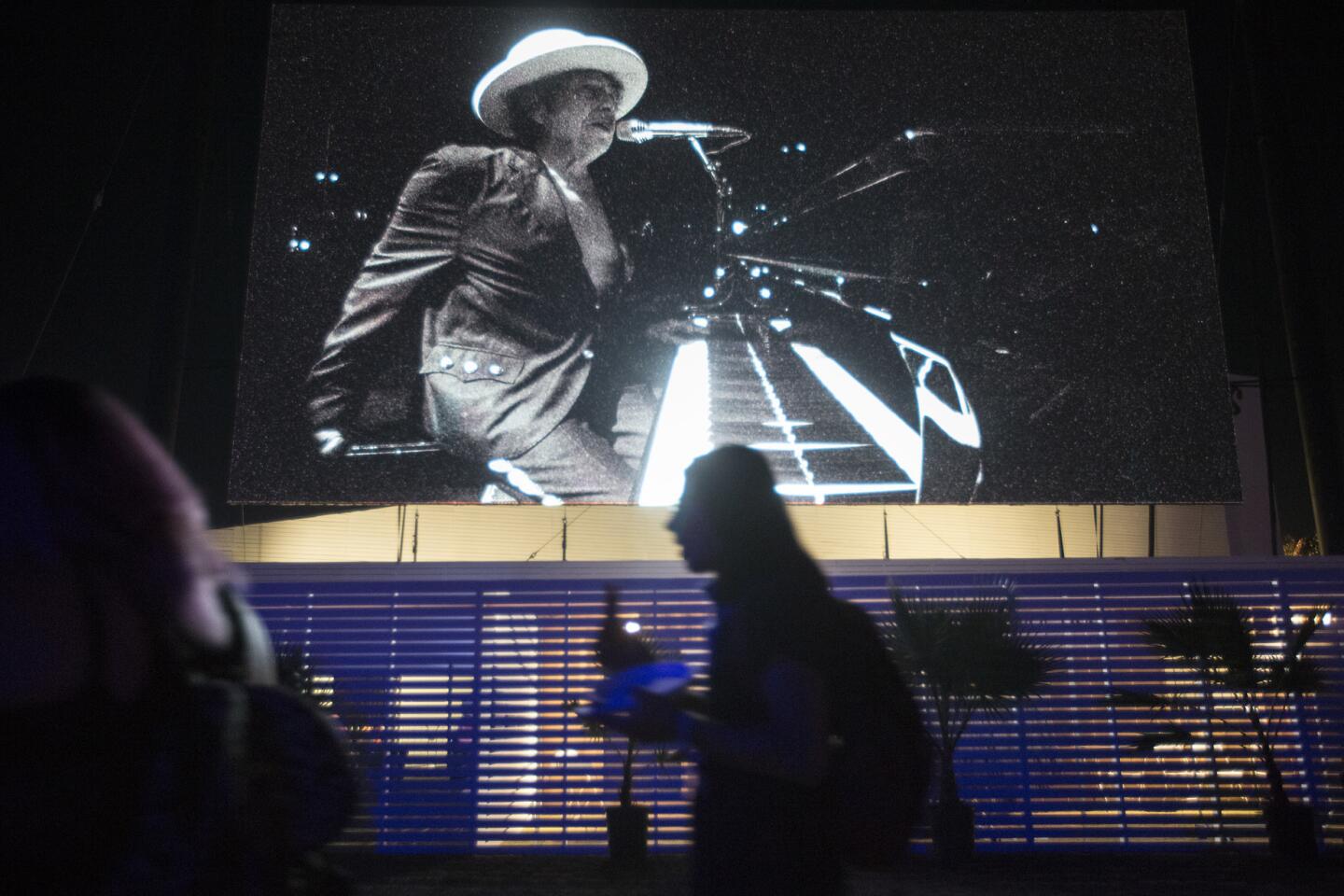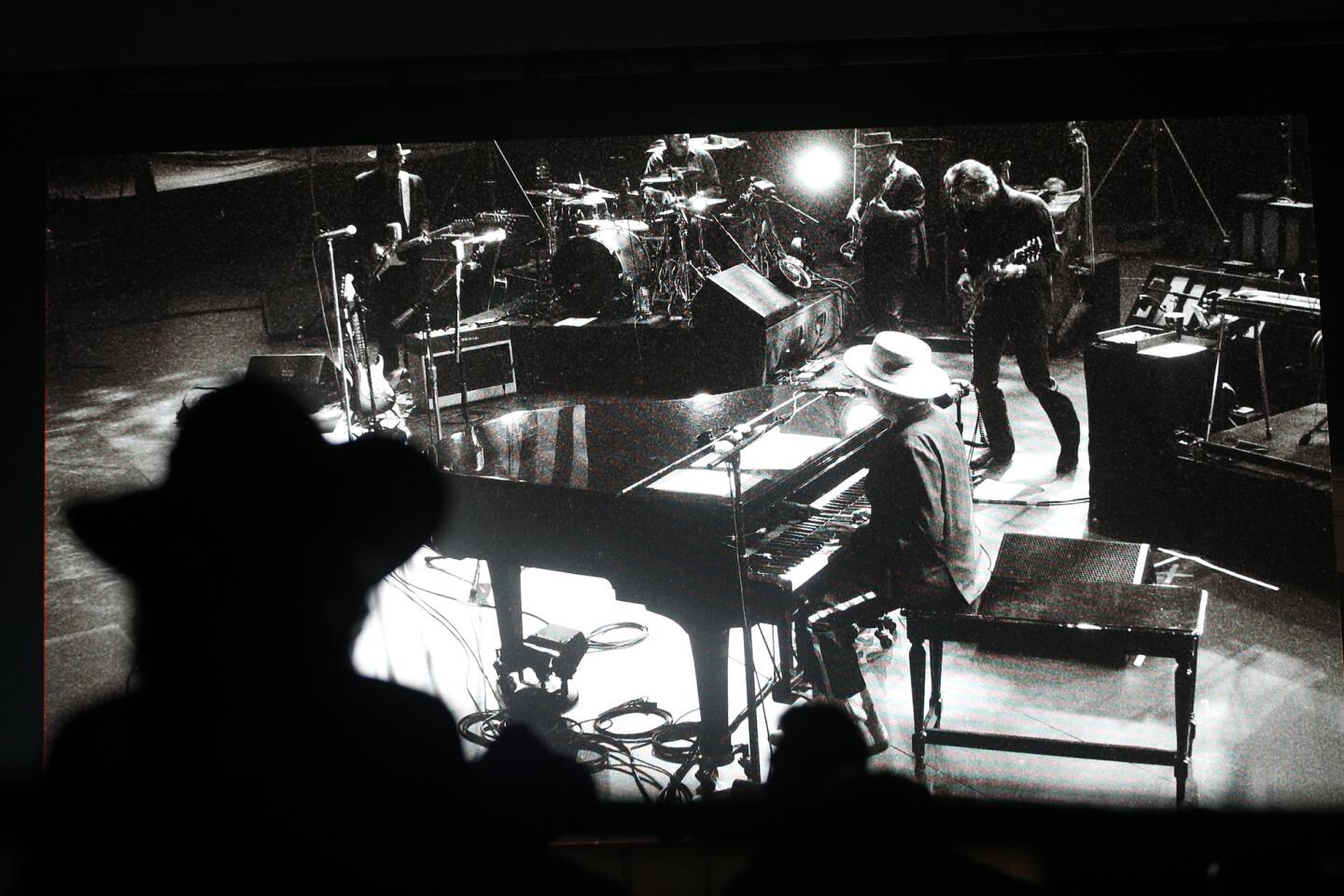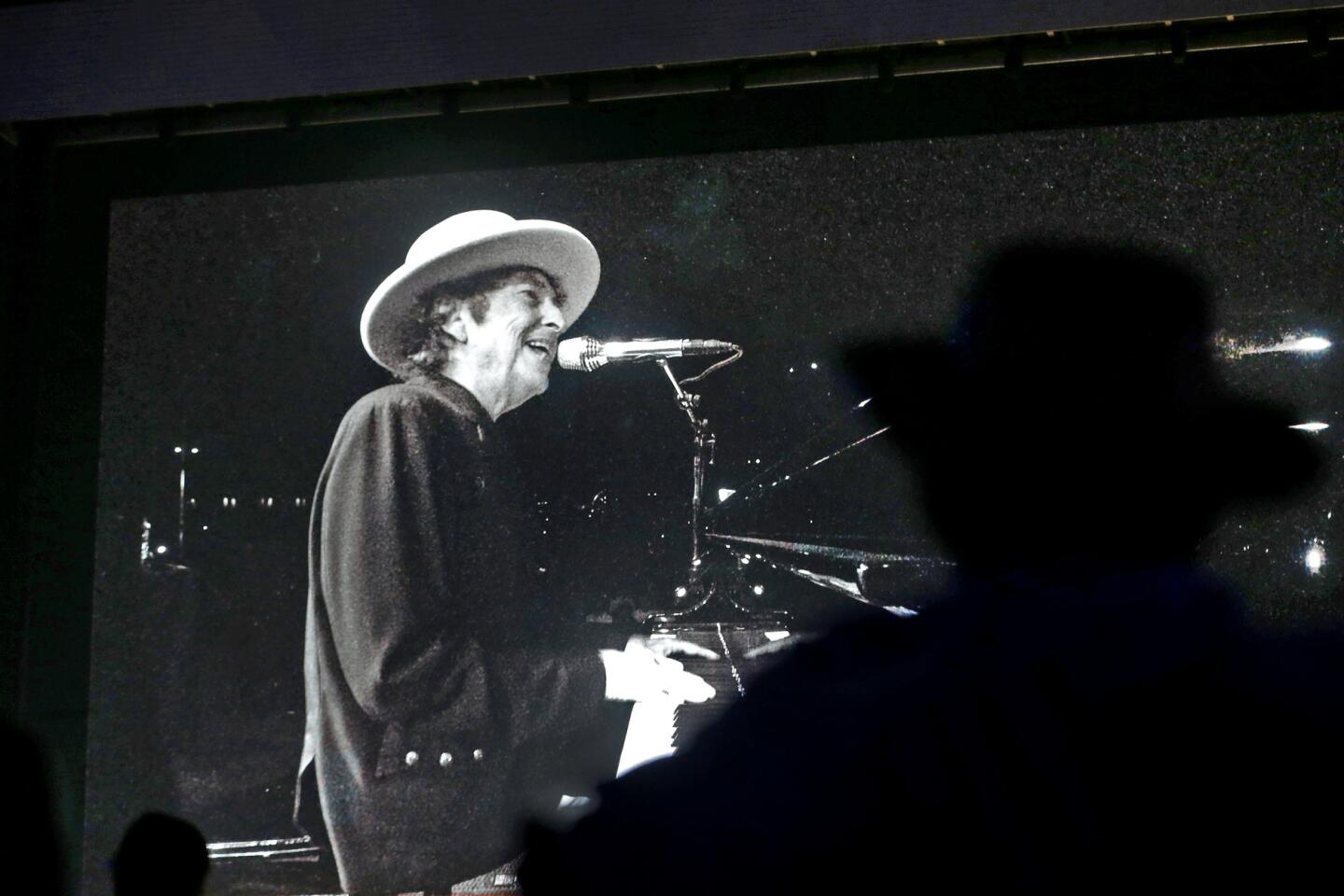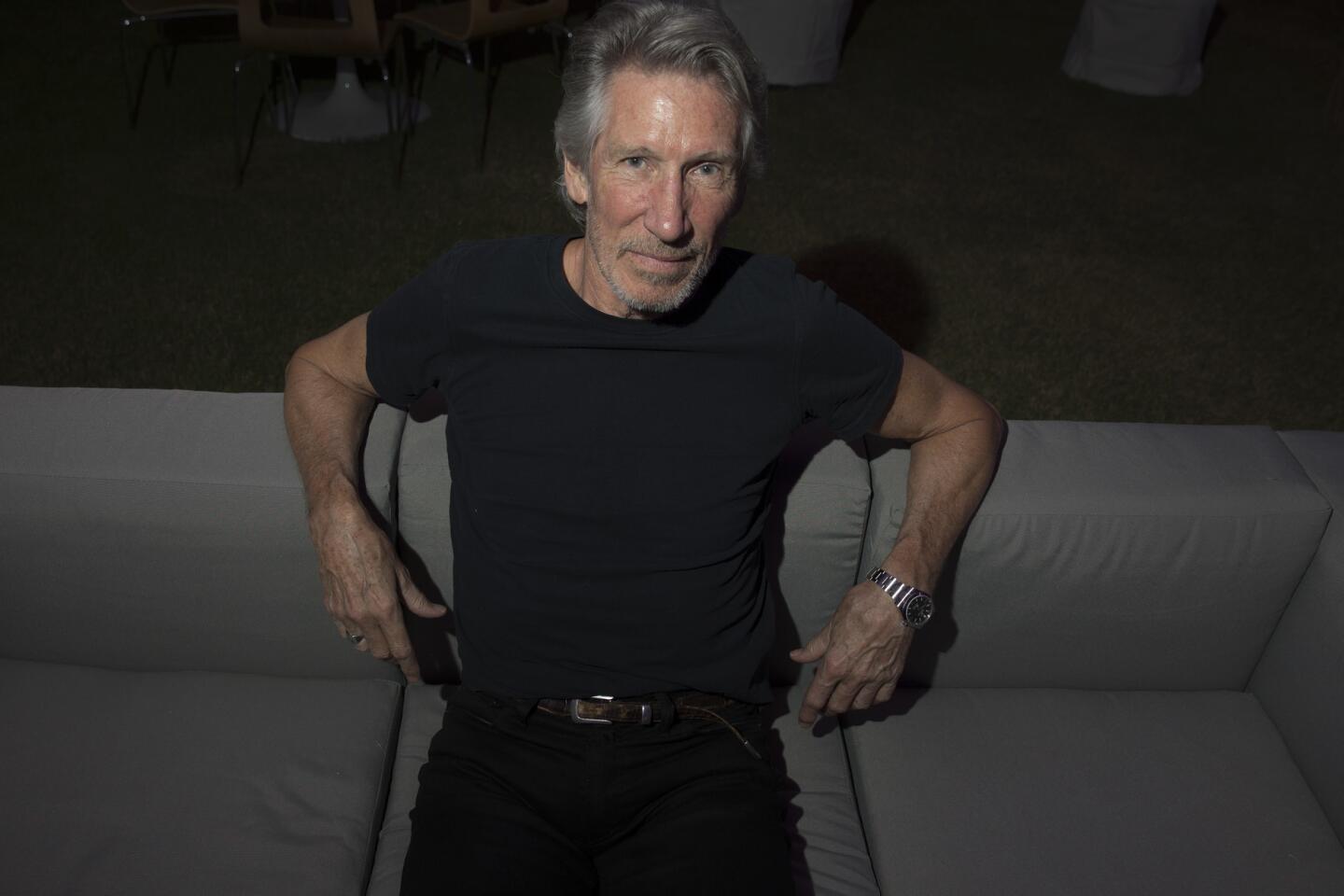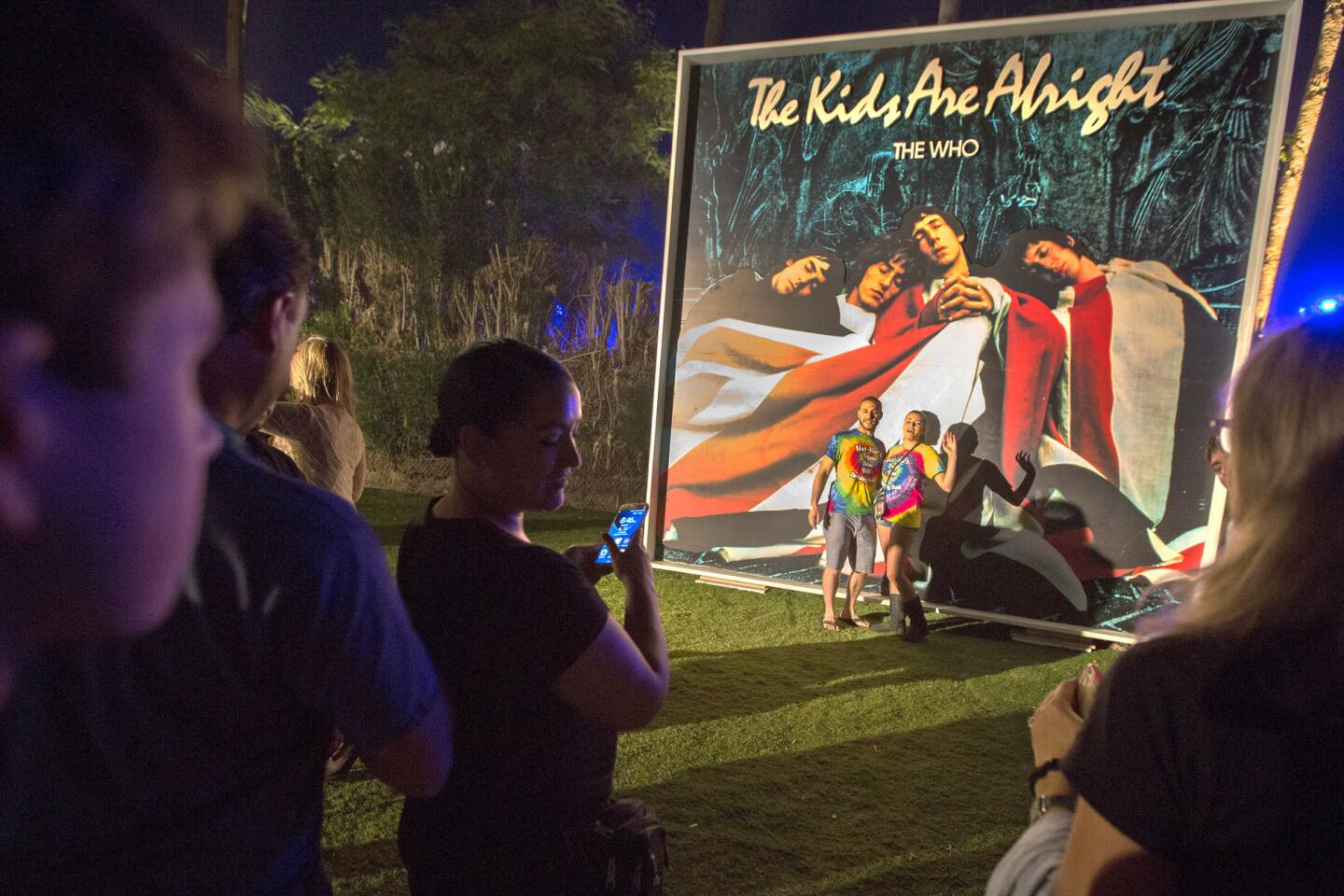Desert Trip’s dream lineup and sky-high prices are making history—and upending rock fest tradition
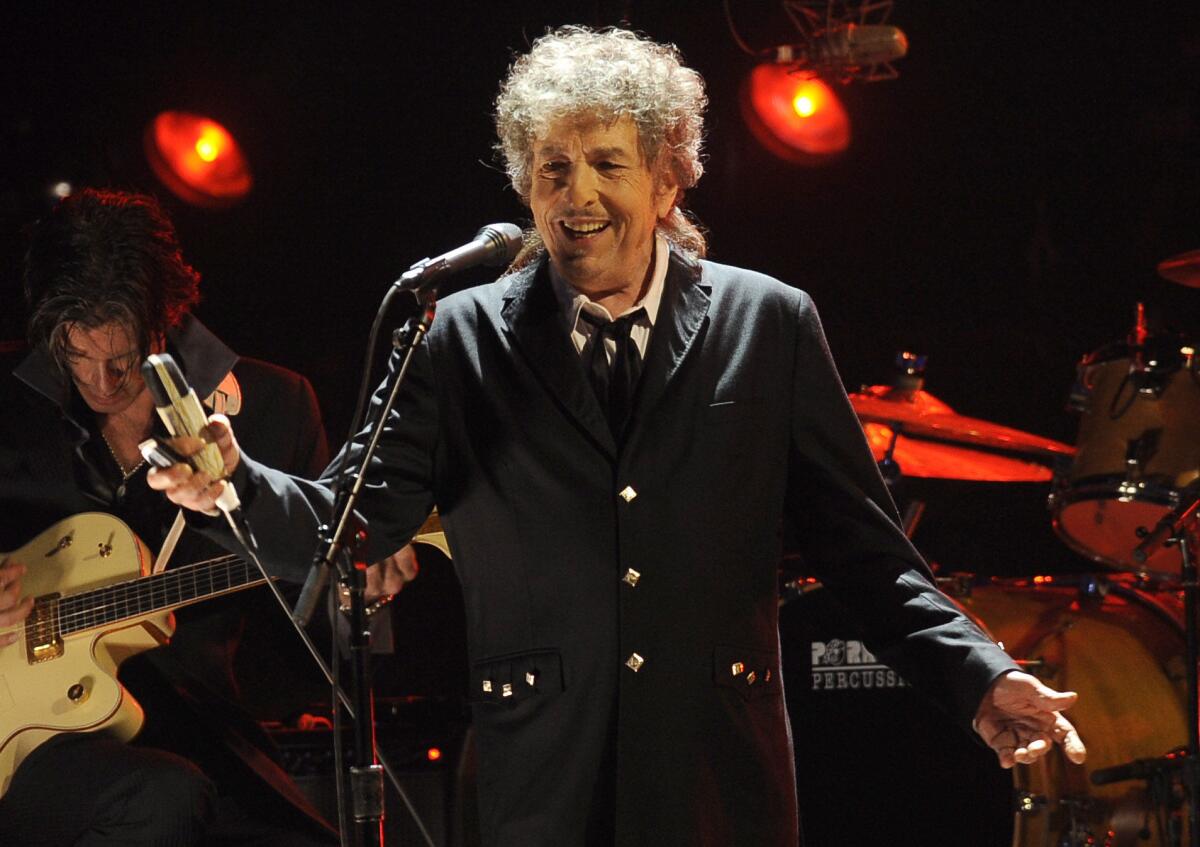
- Share via
There’s a good reason many people are calling the Desert Trip music festival “Oldchella”: The average age of the audience is 51; for the headlining acts, it’s 72.
But if the punchline for the multi-weekend event featuring performances by half a dozen rock titans, including the Rolling Stones and Paul McCartney, involves sensible shoes and Viagra, the bottom line is even more complicated: An event aimed specifically at the commune-embracing “Steal this Book” generation will be the most lucrative music festival on record.
For many attendees, it will also be the most expensive, pointing to the evolution of the once-egalitarian ethos of rock and quite possibly a revolution in the price, shape and content of music festivals in the future.

Fans make the Desert Trip for the best that rock ‘n’ roll has to offer.
Desert Trip, which kicks off Friday, is slated to take in $160 million over two consecutive weekends. That’s almost double the previous record of $84 million by the Coachella Valley Music and Arts Festival last year (both are promoted by Los Angeles-based Goldenvoice and take place on the same grounds in Indio).
In an industry struggling to recover revenue in the age of free music-streaming, many see the rise of such a high-grossing festival as cause for celebration.
“It’s a whole different game,” said Jim Guerinot, a veteran Southland concert promoter, record company executive and talent manager. “If Coachella is the Cadillac of festivals, this is the spaceship.”
Desert Trip is the first of its kind to feature six of classic rock’s most musically and culturally influential acts on one bill. That lineup also includes Bob Dylan, Neil Young, the Who and Roger Waters — all of whom have never previously shared the same stage — in an event aimed directly at baby boomers, a demographic often overlooked by the youth-focused music machinery.
If this festival is any indication, the generation that helped popularize rebel music is alive and well and willing to pay for the kind of “good old days” experience they once condemned.
To buy a seat at Desert Trip runs anywhere from $699 to $1,599. Some VIP packages with better access cost more than $3,000. Three-day general admission passes for the standing area behind the seated audience sold out immediately for $399. Entry for a single day is $199.
“Everyone will make a lot of money, minus the fans who give a lot up,” said one veteran industry booking agent who declined to give his name because of business relationships with Goldenvoice.
Everyone will make a lot of money, minus the fans who give a lot up.
— Booking agent
Those fans are not confined to the 50-plus crowd; many younger people have heard these fabled names bandied about since birth and want to see for themselves what all the fuss is about. The show’s broad-based appeal is also reflected in the fact that concert-goers are coming from every continent except Antarctica, Goldenvoice officials say.
“The draw about Desert Trip is the ability to see these huge names,” said Shaun Hunsaker, a 34-year-old fan who dropped more than $3,000 for a pair of tickets admitting him and his business partner into the pit in front of the stage.
Hunsaker said he’s never attended a concert by any of the Desert Trip headliners.
“I’ve been to Coachella for seven or eight consecutive years,” he said. “With Coachella, there’s a ton of bands and ... a lot of lesser-known, up-and-coming acts. These are six of the greatest musicians of the generation. To see all of these guys at that venue — that’s the appeal there.”
But where some see the ultimate classic rock experience, others see the ultimate classic rock rip-off.
Singer David Crosby, who played Woodstock with Stephen Stills, Graham Nash and Young in 1969, was quoted in the Daily Mail this week saying that Desert Trip is a “scam” that’s all about “merchandising.”
“It’s a gigantic money machine, and I’m not in it for the money,” he said. “You can’t tell who’s on stage because they’re a pinprick — that’s why Jagger waves a scarf around, man: He’s so far away you can’t tell it’s him.”
See the most-read stories in Entertainment this hour »
Certainly some of rock’s early ideals — namely that it’s egalitarian in nature — may have less of a place at Desert Trip. Get hungry at the festival? Gourmet food packages are available, such as the “wine and food experience” for $179 featuring “a program of wineries crafted by [a] World Renowned sommelier,” or partake in the “Fine Dining Experience” for $225 (Goldenvoice’s other festivals also offer such luxuries).
And there are hints that the pricing may have been overly ambitious.
As of Thursday morning, ticket brokers on the resale market had heavily marked down Desert Trip passes. General admission wristbands, for instance, could be had for $149, a savings of more than 50%. Even some seated options could be snared for less than $200, tickets that initially approached the $1,000 barrier.
Hunsaker himself bought extra top-tier tickets at $1,599 in hopes of reselling them at a profit to recoup some of his own investment in tickets.
“I got totally hosed,” he said. “I just sold them for $400 so I wouldn’t be completely out on them. I posted on Facebook a few days ago that I had extras and six or seven people responded saying they were in the same situation.”
Still, Desert Trip will represent another win for a music industry where physical and digital record sales no longer drive the market. The three-figure price for a single concert ticket had long seemed unimaginable — until the Eagles’ 1994 Hell Freezes Over reunion tour broke that barrier. It’s since become commonplace.

Mick Jagger, left, and Keith Richards of the Rolling Stones in Boston in March 1999.
David Bakula, vice president of analytics and client development at Nielsen Entertainment, says boomers are a generation that has been “under-indexed” in the concert market. If older festival-goers are drawn to an event, he says, they’re 15% less likely than festivalgoers overall to let a lack of money stop them.
Sixty-seven percent of music listeners in that age group indicated that they love how music helps them remember and relive the past. “They’re going out there to hear the classics, the stuff that they’re familiar with,” Bakula said.
Before Goldenvoice introduced the Coachella Valley Music and Arts Festival in 1999 at the Empire Polo Field, music festivals were relatively rare in the U.S. .
After an initially rocky start, Coachella’s success triggered a flurry of new festivals across the country. The biggest of them — Lollapalooza in Chicago and Bonnaroo in Manchester, Tenn. — carry a sticker shock more regularly associated with, say, the luxury cruise industry than rock ’n’ roll.
Still, none approach Desert Trip, where capacity is around 75,000 per day, and early tickets sold out in about five hours when they went on sale in the spring.
But it isn’t just the cost that could make this a new model.
The structure of Desert Trip provides a significant new addition to the concert festival picture. Its single-stage, two-act-per-day curated lineup is distinctly different from the 12-hour-plus marathons featuring dozens of acts — nearly 160 at Coachella in 2016 — over multiple stages offered at virtually all other festivals.
Part of the attraction of this bill is that it has the aura of an once-in-a-lifetime event.
— Gary Bongiovanni, editor in chief of Pollstar
It was the structure, not the artists, that Goldenvoice chief Paul Tollett began thinking about two years ago. “What would it be like to have a really focused rock ’n’ roll show with just six acts,” he says he wondered, quickly followed by: “Who would I want?”
“Part of the attraction of this bill is that it has the aura of an once-in-a-lifetime event,” said Gary Bongiovanni, editor in chief of Pollstar, which tracks the touring industry.
“The interesting thing will be whether Goldenvoice will try it again with a different lineup,” Bongiovanni said. “If you hunt hard enough, you can probably find another six acts that merit this kind of excitement. But it’s not the kind of thing you can do a lot of.”
Desert Trip is expected to add upward of $250 million to the Coachella Valley economy with hotel stays and recreational visits to golf courses, spas and shopping, according to Michael Bracken, managing partner and chief economist for Development Management Group, which consults for Desert Trip promoter Goldenvoice.
That’s a lot of money spent for a generation that once was happy to crash in the muddy fields of Woodstock.
If Bob Dylan — the man who advised “mothers and fathers throughout the land … your old road is rapidly agin’/Please get out of the new one if you can’t lend a hand” — once was a controversial figure of the counterculture, for the next two weekends he’s a cornerstone of a family-friendly event.
Guerinot said he bought Desert Trip this weekend for himself, his wife and their four children, ages 9 through 18. “My kids are already sending me food picks: ‘Oh Dad, look at this!’ This is definitely not the same thing I experienced seeing Bachman Turner Overdrive at the Long Beach Arena in 1974.”
Times staff writer Randall Roberts also contributed to this report.
ALSO
Talkin’ ‘bout their generation: What Desert Trip says about the classic rock mindset
‘Old-chella’? Whatever. The all-star lineup at Desert Trip proves you can still rock over 70
Rolling Stones announce first new studio album in over a decade, ‘Blue & Lonesome’
More to Read
The biggest entertainment stories
Get our big stories about Hollywood, film, television, music, arts, culture and more right in your inbox as soon as they publish.
You may occasionally receive promotional content from the Los Angeles Times.
